2 Volumes
History: Philadelphia and the Quaker Colonies
Philadelphia and the Quaker Colonies
Nineteenth Century Philadelphia 1801-1928 (III)
At the beginning of our country Philadelphia was the central city in America.
Education in Philadelphia
Taxes are too high, but the tax base is too small, so public education is underfunded. Drug use and lack of classroom discipline are also problems. Business and employed persons have fled the city, must be induced to return. Deteriorating education, rising taxes and crime are the immediate problems, but the underlying issue is lack of vigor and engagement by the urban population itself.
Cost of K-12 Education

|
| Kids In the Classroom |
The April 11, 2010 edition of the Philadelphia Inquirer contained the thirteenth annual "Report Card" on schools of the eight-county Philadelphia metropolitan area. The report is eighteen newspaper pages long, mostly statistics, a real contribution to the area's understanding of itself in an important area of concern. Perhaps some future edition will take the data for a thirteen-year period and measure how things are changing over time, for better or worse. Trend analysis is often more illuminating than a snapshot of one moment in time but requires uniform data definitions. Achieving uniform year-to-year definitions can itself cause some other problems. For example, the Pennsylvania figures for teachers' salaries makes a measurement cut at $80,000 per year, while the New Jersey data samples salaries over $75,000. It's therefore hard to compare salaries between the two states, but if you want to compare a district with itself over time, you have to continue to report it the way you did last year. It somewhat depends on whether you want to study the two state governments or the individual school districts. Therefore, compromises of data collection made years ago, continue to be made for the sake of consistency. This sort of rough adjustment is just part of data management and usually proves to have had an innocent beginning. Inflation and population migration similarly make it difficult to collect data year after year which will illustrate a meaningful trend in future decades. Sometimes you measure things at the state level because small but important trends just don't show up meaningfully in the smaller school districts. That's not a criticism, that's just the way it is.
Buried within the long columns, a few numbers do fairly scream for attention. Philadelphia's 163,647 school children are 87% non-white, a "minority" group that badly needs educational help if they are to become productive members of a globalized, service (non-industrial, non-farm), economy. Unfortunately, the City is stretched to spend $11,426 per student, the lowest average of any district in the 8-county area. The lowest, remember, of several hundred neighboring districts. At the same time, the City is fast approaching bankruptcy because its present tax level drives away business. The resulting unemployment raises welfare costs, and fosters higher expenditures on crime and punishment, drawing resources away from education. The credit of the City is shaky, so closing the gap by borrowing gets harder all the time; this is a terrible moment to experience an economic recession. If you dig into this data just a little, you get an important illumination. Philadelphia teachers' salaries are lower than 80% of the neighboring region, but compared with property values, they are in the middle of the range. We are in the middle of a recession, but worse still we are in the middle of a real estate recession, where most school taxes are based. Think that over; that has to mean property values are depressed in the City and will go even lower if real estate taxes are raised. Alternatively, rising property values would result in rising tax revenue, and then the City could afford to pay teachers enough to attract them back into the City school system. Paying the lowest salaries for miles around almost certainly affects the quality of the teachers attracted to work here. At the moment, however, the City doesn't dare raise taxes. But it also doesn't dare let the school system fall apart. The city has passed the tipping point where this will correct itself, and must somehow do something dramatic to get to the other side of that tipping point. Vehement union demands make it seem that all this problem needs is more money. That's far from enough; since it's hard to see where the money would come from, it's anyway vital to be thinking of nonfinancial solutions as at least as important as financial ones.
The school system doesn't show up very well in the statistics. More than half of the city high schools send less than half of their students to some kind of college. Leaving college quality to one side, only one of the hundreds of eight-county school districts also sends fewer than half its class to college; most of them send 80-90%. And the one non-Philadelphia school district in the region which sends only 38% to college is the City of Chester, which has problems similar to those of Philadelphia. Outside the city limits, this metropolitan region is doing fairly well in the struggle to educate its next generation for a globalized economy. But unless something pretty dramatic is done, the inner city will not be able to cope with low-cost foreign labor, nor will it be suitable for the better-paying jobs, while employers could actually be starving for educated labor, but totally unable to make use of uneducated job applicants, once the recession is over.
For centuries, Philadelphia subsidized the farm regions of Pennsylvania, in the sense that it contributed more state tax revenue than it received back in benefits. Ever since World War II, however, the rest of the state has been subsidizing Philadelphia and hates this situation with a lethal political passion. During the last half of the 19th Century and particularly with the automobile in the early 20th Century, the agricultural workers of Central Pennsylvania have migrated to the city to take industrial jobs. There is no going back; agriculture now only employs 2% of the nation's population, industrial employment is going in the same direction. The former agricultural/industrial workers must somehow get themselves educated enough to face new challenges. We have twelve million illegal immigrants in America; the appalling thing is to hear we may need their labor because somehow twelve million legal immigrants aren't up to the task. Once they get mixed up with recreational drugs and the criminal justice system, what little chance they had for advancement rapidly fades. The Chinese tackled this same problem by forbidding reproduction. Industrial Europe tackled this problem with famine and wars. Because Americans can't even discuss such approaches, it looks as though there is nothing to do, but that isn't so. We've just exhausted our traditional approaches.
During the 19th Century, for example, the Catholic school system of Philadelphia was one of the wonders of America. That's what Cardinal John Henry Newman was all about, and he richly deserved to be sainted. For reasons remote from this discussion, the Catholic Church school system lost considerable vigor in America. That sad process seems to be continuing a downward spiral, so it's doubtful it will revive soon. Perhaps the charter school approach can fill the void, perhaps a voucher system of school choice has something to offer. Meanwhile, Catholic schools are feeling a drop in enrollment, some are closing; the most common complaint is that the current recession in the economy has made the tuition to Catholic schools a serious handicap to competing with charter schools in their neighborhood, where the education is said to be at least as good, and free. A shorthand description of the politics here is the public school teachers union fear vouchers for school choice, and the Catholic schools fear tuition-free charter schools. What might be helpful would be a realignment of incentives within a voucher system which would benefit all three school choices instead of victimizing the public schools; standardized testing at least opens the way to devising a reward system to inform the flow of public subsidies. No one is interested in a system like that in France, where every student in every school is looking at the same page of the same textbook every day. The goal is to reward objective educational improvement, under any or all management structures; and the main problem is to be objective about the measurement of it.
Maybe we should legalize recreational drugs, but then maybe we should legalize recreational crime; bad ideas will always come forward in a crisis, and someone must have the fortitude to reject them. And someone has to have the fortitude to face down the Teachers' Unions; it was better if that someone is black. Someone must face down organized crime, quite regardless of the crime product popular at the moment; it was better if that someone could be of Italian extraction. Right now, it looks as though the state government of New Jersey came close to being dominated by an informal network of gamblers, criminals and public service unions. We are close enough to watch with awe as a former prosecutor takes a meat ax to what he learned when he was an investigator. One hopes for his success while watching uneasily to see if he can himself remain within legal norms. Philadelphia remains of the mindset of buying its way out of the education problem; that's not going to work.
For one thing, it seems to have been unsuccessful in neighboring Camden. Once more referring to the Inquirer's educational report card, Camden produces some documented warnings. Camden spends $16,131 per pupil, about half again as much as Philadelphia. Camden teachers are paid in the top quintile for the state, class size is nearly the smallest in the state. About 88% of the money is contributed by the state government, which temporarily at least solves that particular issue. In spite of this spending, Camden has the highest crime rate in America, its school population remains 99% nonwhite, only 38% of those who struggle to high school go on to college, and their SAT scores are the lowest or nearly the lowest in the state. Perhaps in time, the education will improve; there is little sign the economics of the city has improved. Lots of abandoned building have been torn down, nothing new has been constructed except with public tax money. Money may be necessary for urban revival, but it certainly is not the central solution. Until the politics improve, there is little likelihood that civil society, non-government organizations, can produce the leadership so strikingly missing. The corrupt government must at least get out of the way.
Because more money without civic engagement probably cannot solve the problem, gimmicks to beg or borrow money may be a distracting blind alley. Philadelphia consolidated the city with the surrounding suburbs 150 years ago. That seemed for a while to bring prosperity, but its instability in the face of declining resources is one of the main reasons the 1929 depression was so particularly destructive to overextended Philadelphia. The city was no longer right-sized for its population. When the urban population fled to the far suburbs, not only was further political consolidation impossible, the intervening deserted areas of West Philadelphia, Germantown, and North Philadelphia became slums, so large in area as to be beyond all hope that population growth could soon fill them. As you travel on Amtrak either north or south, the border between Philadelphia slum and suburban greenery is sharply visible at the artificial political borders. The slums grew outward to the border and stopped, the suburbs grew inward to the border and stopped. If the borders moved closer to City Hall, the suburbs would follow; just look at Conshohocken. There's little likelihood of that happening soon, and most of the reason is the present centrifugal mindset of the populace. In their view, the further out you go, the richer you will get. When reality sets in on that particular delusion, perhaps the matter can be reopened. The point right now is that we tried to make the suburbs support the urban core, once, and that opportunity is all worn out. It would be much more useful, not necessarily easier, to introduce some civility into state government.
Children's Scholarship Fund (1)
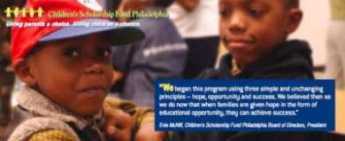
|
| Children's Scholarship Fund of Philadelphia |
Ida Lipman recently visited the Right Angle Club, to acquaint members with the nature of the club's new charity, the Children's Scholarship Fund of Philadelphia. This fund could be seen as a response to the rising realization that the nation's leading social problem is fast becoming one of upgrading the educational strength of the current generation of poor people, who face hopeless odds competing for unskilled jobs against a vastly larger population of foreign poor people in a globalized economy. Our poor people can never hope to rise out of poverty by taking jobs that foreign competitors are willing to perform at even lower wages. And while everyone hopes our poor people can take on better-paying jobs, it requires better education to do it. Ultimately, the question for America is whether to place the emphasis on better teaching or better learning, and the two are not quite the same thing.
The educational problem of motivating children to higher attainments than their parents is a difficult social task in both urban and rural districts, but self-defeating peer pressures to hold down their classmates somehow seems a stronger force in the urban settings. In both environments, of course, the educational attainments of both the parents and the teachers have been aimed at a lower level than the task requires. It somehow proves unrealistic to shift expectations as rapidly as we need to, and part of the present problem is that the education industry has become demoralized by repeated defeats. Consequently, we are certainly lucky that philanthropic donors have been willing to support some radical experiments in the whole educational experience, including students, teachers and parents.
Thus, the Children's Scholarship Fund has been willing to dispense several thousand scholarships to private schools in the Philadelphia region, purely by lottery, without regard to the traditional guidepost of student merit. This policy would probably be disruptive if scholarships were universally available, undermining the spirit of meritocracy which is so central to our educational system. But since we are only partially addressing the failures of a system of universal free public education, a stronger argument can be made that changing the culture occasionally requires that we set aside the traditional incentive of rewarding the behavior we seek. The hope is that a demonstration project with such a radical change will set other motives into motion. Resources are limited; it is recognized that among the ninety percent of students who fail to receive the scholarship by lottery, there will be many who are more talented than the few who are lucky enough to get an award. The point is easily overlooked however that scholarship students must apply for this lottery, and be supported by partial financial assistance from their parents. These parents must sincerely want to raise the educational goals of their children, and convey that motivation to the kids in whatever way they are able to convey it. The pressure of less lucky playmates and neighbors to hold them back, it is hoped, will be lessened by the simple recognition that a lottery gives everyone an equal chance, provided only that they step forward and pledge themselves to try to succeed.

|
| John Walton of the Wal-Mart family |
It's a bold and imaginative approach, a highly counter-intuitive one. John Walton of the Wal-Mart family matches the contributions of other donors at fifty cents on the dollar through his family foundations, which was jointly founded with Ted Forstmann of the Wall Street firm. Many longitudinal studies will eventually show how much this bold and charitable venture really helps the students and the community; since it is private money in use, criticism should be held back until the results begin to be apparent. To whatever degree and in whatever way the scholarship fund is a success, the public must be willing to praise both its spirit of generosity, and its willingness to take a chance. Let's all mark this down in our notebooks, to see how it all turns out in ten or so years.
Religion at Girard College:Spiritual But Irreligious
According to Cheesman A. Herrick, "After Girard had dictated that famous section of his will excluding clergymen and William J. Duane had written it down, Girard asked Duane what he thought of it. Duane, being quite unprepared for the question, and somewhat at a loss to interpret the section, answered, ' I can only say now, Mr. Girard, that it will make a great sensation.' To this Girard replied, ' I can tell you something else it will do -- it will please the Quakers.'"
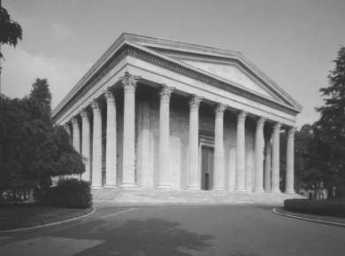 |
| Stephen Girard College Founders Hall |
In the Western part of America, Quaker meetings sometimes do have paid ministers, but the Philadelphia Yearly Meeting and it is component monthly meetings have held steadfastly to the tradition of "unprogrammed meetings"-- without ministers. Girard was not a Quaker, but he greatly admired them, and three of the five executors of his will were Quakers. It, therefore, seems likely, at a minimum, he hoped that Quaker sentiment would fortify his intended banishment of clergymen from his school for orphans, and he might well have got the basic idea from them. Quakers have long noted with disapproval that paid ministers have often publicly supported wars, and Quakers notice that governments waging wars have typically sought to stir up warlike feeling by persuading ministers to help them do so. Another behavior which is almost inherent in the clergy is for ministers to feel that they are measured by the size of the congregation they attract, and hence almost invariably proselytize for new membership. Girard had firm ideas about influencing impressionable orphans, and he did not wish to have outside ideologies capture the administration of the school. 1830 was an evangelical time, and Girard could easily imagine some highly charismatic minister captivating the school.
Other motives may, of course, be imagined. This is what is actually in the will:
Prohibiting any ecclesiastic, missionary or minister of any sect from holding or exercising any station, no such person should ever "be admitted for any purpose or as a visitor, within the premises occupied by the College...I do not mean to cast any reflection upon any sect or person whatsoever, but inasmuch as there are such a multitude of sects, and such a diversity of opinion amongst them, I desire to keep the tender minds of the orphans free from the excitements which clashing doctrines and sectarian controversy are so apt to produce." As matters were to turn out, religious meetings have been conducted by laymen almost every day at the College, and the custom grew up that the boys themselves were often called upon to conduct religious meetings. A great many graduates of Girard College eventually went on to careers in religious ministry, so it even seems likely that their experience at the school had the effect of interesting them in the ministry by giving them a taste of it.
In 1844, the numerous relatives of Stephen Girard tried to break the will. No one has seriously proposed their grievance was anything but financial. However, they sought the services of the most noted lawyer, orator, and statesman of his day, Daniel Webster. Webster would have been wise to refuse to take the case since he could think of no better argument to use than that -- the exclusion of ministers demonstrated the school for orphans was not a true charity, and only a true charity would be allowed to exclude ministers. Several days of oratory enveloped this preposterous argument, which today reads like pure bombast and humbug. The U.S. Supreme Court in time unanimously rejected his brief, with the generous comment that the law was not on his side. Other lawyers have privately remarked that such oratory was never intended to persuade a court, but to impress a rich client.
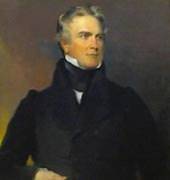 |
| Horace Binney |
Horace Binney, the lawyer son of another Horace Binney who established an enduring reputation for calmness in midst of a religious storm during the Hogan Schism, was the successful defender of Girard College. In contrast with the flowery reverberations of Webster's voice, Binney confined himself to short words in short sentences, sticking strictly to the point without appeal to emotion. In fact, one wonders why Webster stooped to it. Historians credit him for the arguments that later inspired the defenders of the Union with enough conviction to win the Civil War. Essentially, he convinced Unionists that the Constitution had not created a confederacy, but a Union, which implicitly must have all the powers needed to preserve itself. Half the nation would not accept his reasoning, however, and his willingness to proclaim nonsense in the Girard case confirmed many Southern suspicions that the Union argument was also specious. Fifteen years later, Philadelphia was quite slow in coming to the Union side, for a variety of reasons. His attacking a cherished Quaker belief in a Quaker city was certainly not useful. In time, it would be possible to hear a quiet parody of the Union's marching song, that "He died to make men holy -- we will kill to make men free."
 |
| Advice to Young Men and Boys |
It is unfortunate that the one thing most people think they know about Girard College is that religion is excluded. Far from it, there is more attention to morals and ethics than in public schools. Indeed, Girard College compares well with Phillips Exeter Academy, Webster's prep school and perhaps his model. One of the great concerns about orphans is that they may be easily led into a life of crime; there is no doubt that Girard College makes unusual efforts to keep that from happening. In fact, the school may be said to have written its own prayer book during the late 19th Century. Books of devotion were written and then organized by committees of laymen, eventually published by the Chairman, Benjamin B. Comegys. Entitled Advice to Young Men and Boys", Comegys notes that the book was published "in the hope that it may be the means of helping some boys and young men other than those to whom the Addresses were made." It would have to be observed that Girard College inspired an unusual interest in the ministry among the boys, by encouraging them to lead in the ceremonies themselves. And by having the Board of Trustees participate in the construction of books of moral principles, they no doubt similarly evoke a high sense of fidelity within the businessmen trustees. Since those entrusted with huge amounts of money are faced with huge temptations, the Trustees quite possibly need the stimulus as much as the students do.
REFERENCES
| Girard College It's Semi Centennial of Girard College: George P. Rupp ASIN: B000TNER1G | Amazon |
The Supreme Court Revisits Girard's Will
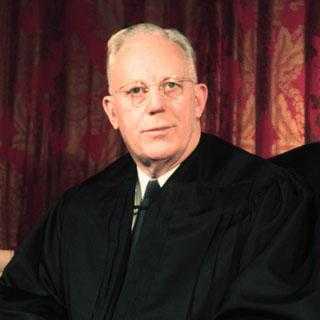
|
| Chief Justice Warren |
In the 1954 case of Brown v. Board of Public Education, Chief Justice Warren wrote an opinion for the U.S. Supreme Court (347 U.S. 483), overturning the 1896 doctrine of "separate but equal" in public school systems which the Supreme Court had laid down in Plessy v. Ferguson, 163 U.S. 537. Warren famously declared that separate was inherently not equal. The Brown decision did not extend to all public accommodations, or even to all schools. It was limited to public schools. Furthermore, in explaining why it took half a century for the Court to discover this principle, Warren pointed out the schools in the South were largely private schools at the time of the Plessy opinion, since the movement toward free common schools, supported by general taxation, had not yet taken hold. The central point in all this was that Brown desegregated public schools and nothing else. Therefore, when the case of Stephen Girard's will ("poor, white, orphan boys") came back before the Court, the issue was whether Girard College was a public school because Girard's will designate the City and State to appoint the trustees.
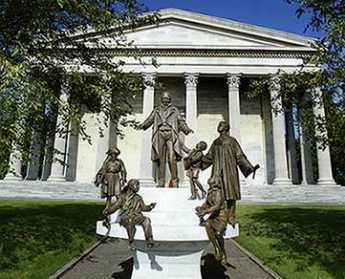
|
| Girard College |
The first black plaintiffs to seek admission to Girard College, at least in response to the Brown v. Board decision, were represented by Raymond Pace Alexander, a black member of Philadelphia City Council. Alexander maintained that the College's racial discrimination, employing the supervision of City and State governments, was unconstitutional. Since Alexander was plainly interested in the education of black students generally, it was important to stress the public school issue. Otherwise, invalidating many wills, and the policies of many private schools, would have been harmful to black students. For example, the Annenberg Foundation has donated $52 million to the United Negro College Fund, the W.K. Kellogg Foundation: $58 million for higher education for Hispanic and Native Americans, the Lilly Endowment: $92 million for the Hispanic Scholarship Fund and United Negro College Fund. The largest such private racially segregated donation is from Bill and Melinda Gates: $1 billion annually for 20 years for full scholarships for black, Hispanic, Native American and Asian students, seeking degrees in engineering, mathematics, science, and education. In the course of protracted litigation, it became clear that the Supreme Court's Brown decision could not be completely reconciled with its 1844 decision (Vidal v Girard Executors, 43 U.S. 127, upsetting the arguments of Daniel Webster) reaffirming all the language of the Girard Will. Girard made Girard College an essentially private school financed by private money. But the choice of the City and State to appoint trustees did create a degree of public involvement. Faced with challenging litigation, the courts would have to invalidate some feature or other of the will to maintain strict conformity with Brown v. Board of Public Education. Which choice -- admit black boys and girls, or find a different way to appoint trustees? Since the trustees selected by other means would very likely be exactly the same people, the choice seemed an easy legal one. The political choice was more difficult.
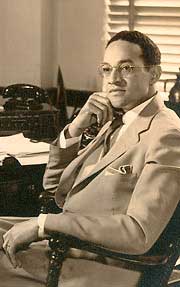
|
| Raymond Pace Alexander |
At first, the Supreme Court seemed to be taking the approach of changing the method of selection of trustees. They deflected (remanded) the matter to the Pennsylvania Supreme Court, which in turn remanded it to the Orphans Court in parallel with a newly-legislated power of the Orphans Court to appoint substitute trustees. The Girard case was headed for the conclusion that Orphans Court should either appoint new trustees or define a way to appoint them. Without the political appointment of trustees, Girard College was a fully private institution, unconcerned with the constitutionality of the Plessy decision, or with the Brown repeal of it.
However, further litigation ensued, with a new focus for the U. S. Supreme Court to ponder. The contention was made that Girard had two purposes in mind when he wrote the will. He wished to help the poor, white, orphan boys. But he also stated that he truly had the welfare of Philadelphia at heart, wishing to foster the prosperity of the City and the health and comfort of its inhabitants. Were these two distinct goals, or was the education of certain orphans a mechanism to enhance the welfare of the City? Involving the leading men of the city in the governance of the College, and acquiring the power and influence of its leading politicians might strengthen Girard College in many important ways. Could it be that the words about the general welfare were more than merely lawyer's boiler-plate? While the general public at that time and subsequently may well have regarded these pleadings as pretty specious, the critical audience for this case was made up of lawyers and judges, politicians and officials. The sitting judge had once volunteered to defend officers of the Communist Party against the charge that they advocated the overthrow of the government by force, so he was not afraid to adopt unpopular opinions. There has been no claim he was himself a Communist. But the viewpoints of immensely rich merchants were likely of secondary importance to him, especially by comparison with City Councilmen.
Judge Joseph S. Lord, in what turned out to be the final judicial opinion, seemed to emphasize a slightly different slant. If Girard had to make the choice now facing the court, between poor, white, orphan boys, and retaining the City as his surrogate trustee, Girard would have made the choice to retain the politician trustees. If that seems unlikely to a great many people, let's help him out a little. Let's suppose Girard the financial wizard could have the benefit of reviewing the first century of actual experience with his will. Is it not defensible to contend that the remarkable investment administration of the Board of City Trusts -- arguably just as effective as his own would have been -- would hold great appeal for this star of American investing? Would it not have been persuasive to this notorious micro-manager, that the quality of schools eventually depends more on who runs them, than on who is in attendance?
In any event, by 1968 after a long and complicated legal battle, the first black students were admitted. The case had reached the US Supreme Court, which declared the provisions of Girard's will were superseded by the Brown decision, and therefore the Trustees were permanently enjoined from denying admission of poor black orphans on the sole ground that they were not white, provided they are otherwise qualified for admission". In a second decision, the Court later added a second prohibition against the trustees denying admission to females.
The U.S. Supreme Court carefully specified that the trustees were the objects of its ruling since they were appointees of the State and Municipal government. In part, this precision had the effect of preserving the 1844 decision of the Supreme Court, upholding the provisions of the Girard will against Daniel Webster's assault, on behalf of Girard's other relatives and potential heirs. By taking a strict focus on the governmental appointment of the trustees, the Supreme Court was able to skirt the awkwardness of continuing the unhampered existence of a considerable number of estates and foundations devoted exclusively to the benefit of minorities.
Military School
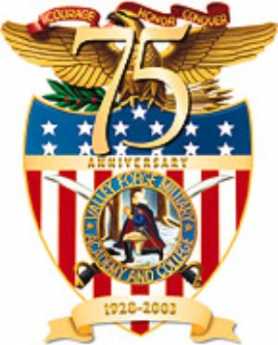
|
| VFMS Crest |
In the middle of the pacifist Quaker farm region, in fact in the middle of William Penn's Quaker Welsh Barony, sits Valley Forge Military Academy. Its location seems even stranger when you consider the nearest town, within easy walking distance, is Wayne, PA described by David Brooks in Bobos in Paradise as the East-Coast epicenter for yuppie education-based elitism, with all its air of entitlement. In fact, Brooks does not mention the Academy once in his three hundred page book about the town. What is VFMA and why is it located where it is? Three names, Baker, Mellon, and Annenberg pretty much explain it. Lieutenant General Milton Baker, a great friend of the Eisenhower family, was passionate about Valley Forge, its history, its parks, its military hospital, its renovation, and its preservation. If Baker founded a school (in 1928), it was going to be here. The money was Mellon and Annenberg money, but Baker was their man.
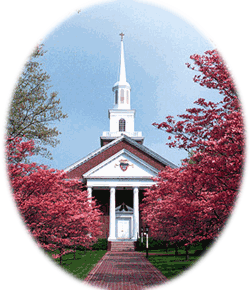
|
| Military school |
Military schools are now in a period of decline. A flurry of a building after the Civil War created about 600 of them, in recognition that the North nearly lost the Civil War to the Confederate States who had a much stronger military tradition, especially in Virginia. It's therefore not surprising that Valley Forge wanders from Southern traditions, and is consciously modeled after Sandhurst, the British Royal Military College. Valley Forge competes with Canada, Australia and Great Britain for foreign students, while the Southern schools are more provincial. There seem to be two main reasons to send your son to a military boarding school.
The first is the tradition of military aristocracy, traceable in a sense to feudalism and the Knights of the Round Table. There's little patience with a politically correct speech in the military, who readily tell you that many rich families encourage their daughters to marry career military officers, as a way of strengthening loyalties between these two power groups. During the formative years of the American republic, the resounding emphasis was placed on having no standing army. That was a cloaked way of restraining a military aristocracy and seems to have provided the main reasoning behind the constitutional Second Amendment, which projects a general right of all citizens to bear arms. It follows the model of Switzerland where military service is universal, as contrasted with limiting firearms to specialists, whether police or military. If that was the goal, it seems to have been effective; military elites now seem most appealing to foreign cultures, like Latin America, Korea, Saudi Arabia. Tony DeGeorge, the current president of Valley Forge, tells of an astounding phone call from one Saudi prince, who responded to an alumni fund-raising appeal by offering to buy the whole school. The Saudi noticed one supposes, that "Storming' Norman" Schwarzkopf, the hero of the First Gulf War, was an alumnus of Valley Forge.
The other main reason to send your son to military boarding school, is because he's too unruly to handle at home. Here is another seemingly delicate matter the school makes no bones about. All new entrants must spend six weeks as "plebes", enduring a ferocious hazing discipline that weeds 'em out. The solution to cell phones and Internet games is to forbid them. Valley Forge confronts the matter of recreational drugs head-on. All students are subject to random drug testing, and a positive test means get off the school grounds -- permanently -- within four hours. The exercises program is not only mandatory, but it is also rigorous beyond description. The result is that fifteen alumni are currently playing professional football in the NFL, the polo team is regularly the national champion. Somewhere General Baker got the idea that playing music helps your mathematical ability, so every single 9th grader plays the violin. The marching band is internationally famous, and by gad, it better stay that way. Only about a third of the graduates go on to a lifetime military career, but another third of the alumni are CEOs of companies. Even what happens to the remaining third bears some thought.
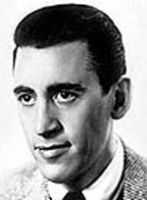
|
| J.D. Salinger |
J.D. Salinger and Edward Albee were both alumni of Valley Forge Military Academy. True, General Baker told Salinger that The Catcher in The Rye was rubbish, and one need not speculate much on how he would have reviewed Who's Afraid of Virginia Woolf? Nevertheless, it cannot be denied that the collision between these two social misfits and the plebe hazing experience contributed significantly to the depth and power of the serious literature they produced. It is not easy to name two alumni of Andover, Exeter or Lawrenceville who have contributed as much to 20th Century American fiction. Salinger and Albee hated the place, but it made them what they became. "Whatever that was," you can almost hear the other two-thirds of the alumni mutter.
In a day that echoes No Child Left Behind, it is a little hard and it is certainly politically incorrect, to give this devil its due. But all Armies live by the slogan, that if you must take an objective, you must take some casualties.
The Schools of School House Lane

|
| Union School founded in 1759 |
The region of Philadelphia defined as Germantown is recorded by the last census as having about 50,000 inhabitants today, 40,000 of whom are of the black race. Germantown has always had an unusual concentration of schools of the highest quality, and here on one street alone there are four. School House Lane runs off to the West of Germantown Avenue, and was originally right at the center of town, the center of the action during the Revolutionary War. The most historic of the schools, the Union School founded in 1759, changed its name to Germantown Academy, and more recently picked up and moved to new quarters in Fort Washington. George Washington sent his nephew there, and its building served as a hospital for the wounded in the Battle of Germantown. When Germantown Academy moved out of Germantown, the Pennsylvania School for the Deaf moved into the vacated quarters. This school had been originally founded in 1820, and is one of nearly a hundred special schools for the deaf in the United States, operating as a quasi-public institution for about 170 students. A remarkable thing about all schools for the deaf is the high IQ of their students. Perhaps deaf underachievers are somehow filtered out by the struggle to adapt before they apply for admission, or perhaps there is something about being deaf that makes you smart. In any event, the average SAT scores of students from PSD, like all schools for the deaf, are always in the very highest ranks among secondary schools.
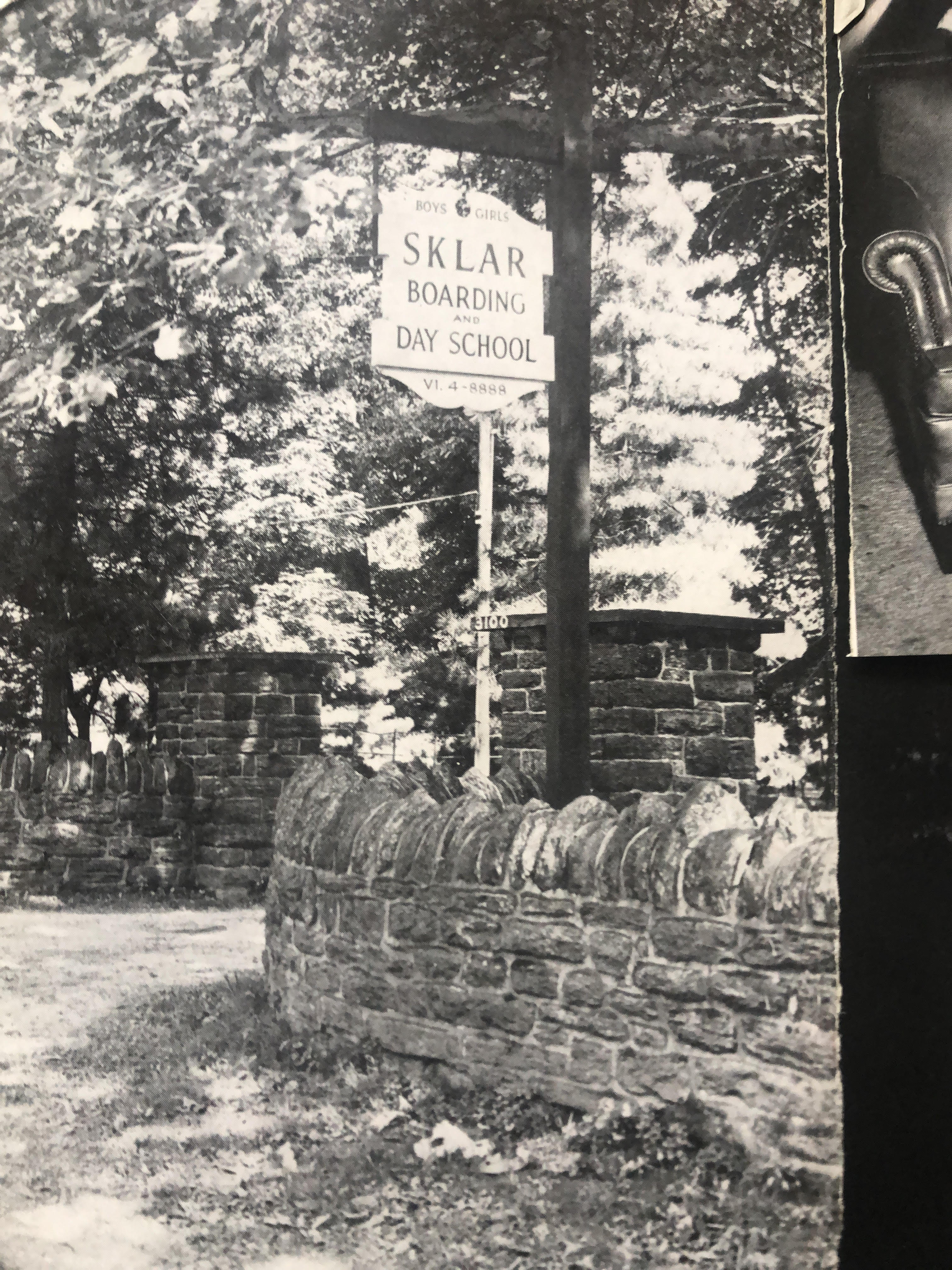
|
| Sklar School Entrance |
More or less next door to it, fronting on Coulter Street, is the Germantown Friends School(GFS), which enjoys and deserves the reputation of the most intellectually rigorous school in the Philadelphia region. There is little question about the Quakers of this school, founded in 1845, but relatively few of the students are now Quaker children. It's pretty expensive and quite uncompromising about its academic standards, but if you want to be accepted by a famous University, this is the place that can boast the most achievement of that variety. By no means all of its graduates become teachers, but alumni of this school do tend to gravitate to the top of academia. That could eventually put them on college admission committees, of course, and perhaps the admission process promotes itself. There can be little doubt that if most of a given college's admission committee happened to play the tuba, that university would soon fill up with tuba players.
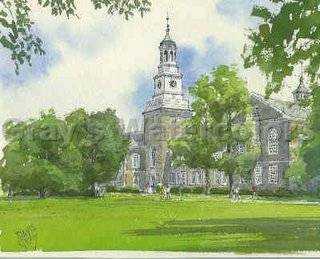
|
| William Penn Charter School |
Further West on School House Lane, is the William Penn Charter School. It's also Quaker, and while it doesn't work quite so hard at it as GFS does, it has plenty of social mission, a great deal more discipline, and plenty of competitive athletics. A minority of its students, also, are Quakers; but as a guess, most of its graduates are headed for disproportionate affluence anyway. The middle school is named for, and was donated by, the former chairman of Morgan Stanley back before Morgan Stanley sold itself to Dean Witter. This school was founded in 1689, and for a long time was located at 12th and Market Streets in Philadelphia, right where the famous PSFS building was built, the one that later converted to Lowe's Hotel .
Finally, near the crossing of Henry Avenue with Schoolhouse Lane, is the Philadelphia University. Since it was founded in 1999 it is the youngest of the schools on School House Lane, specializing in architecture and design, and seems headed for even broader curriculum. The University was formed by the merger of Ravenhill Academy for Girls, and the Philadelphia Textile School. The Textile School was itself formed during the 1876 Philadelphia Centennial, when local industrialists became concerned with how backward America seemed in its quality and design of textiles, compared with other nations which exhibited at that World's Fair. Next door, was once the home of William Weightman, a chemical manufacturer who was reputed to be the richest man in Pennsylvania. After his death, the rather grand estate became the site of the Ravenhill School for Girls, which was the school which could boast Grace Kelly for an alumna. That was natural enough since she lived just around the corner on Henry Avenue and could walk to school. The contrast between the two ends of School House Lane, Henry Avenue on one end, and Germantown Avenue on the other, is just astounding.
So there you have School House Lane. A few short blocks with three distinguished preparatory schools and a university. Plus, the site of three other famous schools which have either moved or merged. You might think Germantown was the home of myriads of school teachers, but that isn't exactly so. It's hard to say just what this complex anomalous situation proves, except to voice the opinion that it is somehow at the heart of what Philadelphia really is.
Note, kind readers have also sent me the names of six more schools on Schoolhouse Lane. Some of them may only be name changes, but the list includes Parkway Day School, Sklar School, Philadelphia Textile and Science, Germantown Stevens Academy, Germantown Lutheran Academy, Greene Street Friends School. (See Comments.)
Germantown Before 1730
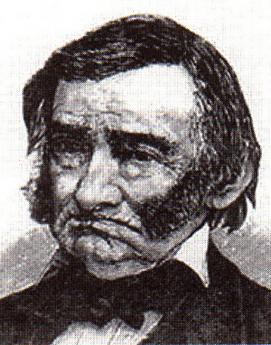
|
| Rev. Wilhelm Rittenhausen |
The flood of German immigrants into Philadelphia after 1730 soon made Germantown, into a German town, indeed. From 1683 to 1730, however, Germantown had been settled by Dutch and Swiss Mennonites, attracted by the many similarities between themselves and the Quakers of England. They spoke German dialects to preserve their separateness from the English-speaking majority but belonged to distinctive cultures which were in fact more than a little anti-German. This curiosity becomes easier to understand in the context of the mountainous Swiss burned at the stake by their Bavarian neighbors, Rhinelanders who sheltered them from various warring neighbors, and Dutchmen at the mouth of the Rhine, all adherents of Menno Simon the Dutch Anabaptist, but harboring many differences of viewpoint about the tribes which surrounded them.
Anabaptism is the doctrine that a child is too young to understand religion, and must be re-baptized later when his testimony will be more binding. In retrospect, it seems strange that such a view could provoke such antagonism. These earlier refugees were often townspeople of the artisan and business class, rapidly establishing Germantown as the intellectual capital of Germans throughout America. This eminence was promoted further through the establishment by the Rittenhouse family (Rittinghuysen, Rittenhausen) of the first paper mill in America. Rittenhousetown is a little collection of houses still readily seen on the north side of the Wissahickon Creek, with Wissahickon Avenue nestled behind it. The road which now runs along the Wissahickon is so narrow and windy, and the traffic goes at such dangerous pace, that many people who travel it daily have never paid adequate attention to the Rittenhousetown museum area. It's well worth a visit, although the entrance is hard to find (try going west on Wissahickon Avenue then turning around, a little beyond the entrance).
Even today, printing businesses usually locate near their source of paper to reduce transportation costs. North Carolina is the present pulp paper source, several decades ago it was Michigan. In the Seventeenth and Eighteenth centuries, paper came from Germantown, so the printing and publishing industry centered here, too. When Pastorius was describing the new German settlement to prospective immigrants, he said, "Es ist nur Wald" -- it's just a forest. A forest near a source of abundant water. Some of the surly remarks of Benjamin Franklin about German immigrants may have grown out of his competition with Christoper Sower (Saur), the largest printer in America, and located of course in Germantown.
Francis Daniel Pastorius was sort of a local European flack for William Penn. He assembled in the Rhineland town of Krefeld a group of Dutch Quaker investors called the Frankford Company. When the time came for the group to emigrate, however, Pastorius alone actually crossed the ocean; so he was obliged to return the 16,000 acres of Germantown, Roxborough and Chestnut Hill he had been ceded. Another group, half Dutch and half Swiss, came from Krisheim (Cresheim) to a 6000-acre land grant in the high ground between the Schuylkill and the Delaware. The time was 1683. The heavily Swiss origins of these original settlers give an additional flavor to the term "Pennsylvania Dutch".
Where the Wissahickon crosses Germantown Avenue, a group of Rosicrucian hermits created a settlement, one of considerable musical and literary attainment. The leader was John Kelpius, and upon his death the group broke up, many going further west to the cloister at Ephrata. From 1683 to 1730 Germantown was small wooden houses and muddy roads, but there was nevertheless to be found the center of Germanic intellectual and religious ferment. Several protestant denominations have their founding mother church on Germantown Avenue, Sower spread bibles and prayer books up and down the Appalachians, and even the hermits put a defining Germantown stamp on the sects which were to arrive after 1730. The hermits apparently invented the hex signs, which were carried westward by a later, more agrarian, German peasant immigration, passing through on the way to the deep topsoil of Lancaster County.
Preppies of the Future?

|
| Sir Peter Hall |
Modern western civilization had its origin, or revival if you prefer, in the Italian town of Florence six or seven hundred years ago. The rise and fall of Florence makes a case example for the two preeminent scholars of civilizations, Peter Hall and Arnold Toynbee. Both of them, for obvious reasons, are British. Toynbee intones the theme that civilizations destroy themselves by overextending their best features. Peter Hall makes that into less of a one-way street. Civilizations flourish in the first place because of competitive tension between two conflicting aspirations; eventual victory by either one starts success on a path of unrestrained decline. In slightly different ways, both of them predict that success leads to failure. Not that failure inevitably follows success, but those notable failures are usually caused by success.

|
| Florence |
Florentine civilization grew out of the interaction, conflict, and intermarriage, of pugnacious aristocrats with sly calculating merchants. For a time, an optimum balance was achieved, and Florence dominated the Western world. Centuries later, much the same thing happened to England as feudalism grappled, first with Elizabethan maritime buccaneering and subsequently with the Industrial Revolution. That's where Eton comes in.
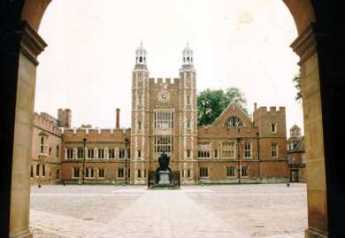
|
| Eton |
For American purposes, it is enough to focus on two Etonian mottos. Lumping both reckless aristocrats and scheming merchant princes, Eton exists "to exert a civilizing influence upon those who are destined to rule." Eton expresses no pretense about diversity or talent; Eton is not a trade school, a place to make useful contacts, or an elevator for upward social mobility. Labor governments, of course, do not share such attitudes, enduringly defended by Wellington's proclamation, that "The battle of Waterloo was won on the playing fields of Eton." That school aspires to teach more than Latin or trigonometry; it teaches duty and courage. And, as needed, it works. The graduate of a similar school Winston Churchill, reminding the nation that never have so many owed so much to so few, was delivering a subliminal illustration that leadership grows from education in many different ways.
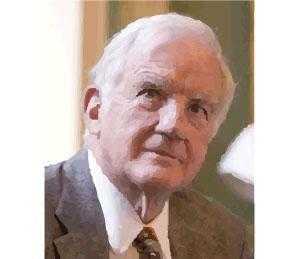
|
| Derek Bok |
So things had not changed much in several hundred years, from Florence to Eton. It became accepted that a nation needs leaders who are smart (no charges of Light Brigades, please), it also needs unflinching bravery, in various combinations at different moments. And then, a research institute very near Lawrenceville, New Jersey, and two Harvard presidents, Conant and Bok, added a new requirement just before the Second World War. By devising multiple choice tests whose results seemed to parallel later academic success in college,
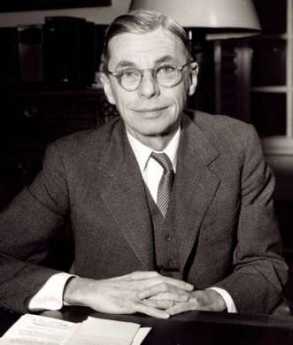
|
| Conant |
it became possible to identify myriads of ordinary American children who seemed to have equal or greater potential than the children of wealth and success. If the leadership pool needs to be enlarged, that's where new entrants should come from. Besides, examples have always abounded of the children of famous people who, even with an outstanding education, bitterly disappointed their expectations. Perhaps, by the application of scientific testing combined with judicious financial aid, it might be possible to civilize the unmentionable social Darwinism long visible in competitive concentrations of hormonally active youth. Without being too obvious about it, perhaps we could create a race of supermen by placing genetically superior candidates of both sexes together, train them well, and let propinquity do the rest. As this tacit system has evolved over nearly a century, the inbreeding has come to depend less on the hidden factors which encouraged success in the parents, and more on whatever genetic skills are linked to adolescent success in multiple-choice examinations. And the expansion of this idea into the unused talents of girls is genetically thwarted by the tendency of professional women to have fewer children by delaying the birth of the first child; a sort of reverse Darwinism induced by prizing professional talents over reproductive ones.
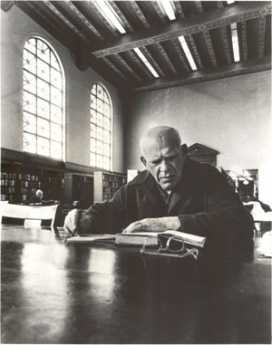
|
| Eric Hoffer |
The American pragmatic way, and the scientific method, both attempt to make decisions by seeing what works. Eric Hoffer, the San Francisco writer, once visited Lawrenceville and pointed out one thing that definitely works. Rich men, he said, marry beautiful women. And so, their children tend to be unusually handsome. It's a circular system that is undeniably at work. Without any conscious scheming by sociologists, an unnerving pragmatism is already at work getting more of whatever it is we need, into leadership positions. Unfortunately, this fiendishly clever system for influencing the genetic choices of promising candidates cannot unequivocally claim to produce long-term success. Like the British royal family, it seems to some the proportion of failed marriages is too high in our system, the incidence of recreational drugs and alcohol is too great, and the number of graceful drifters too numerous among the alumni. Perhaps that is only invidious opinion, based on contrasting unusual opportunities with the ultimate consequences for a fundamentally normal collection of people. Perhaps, if we were truly objective, we might discern a second-generation production of Nobel Prize winners, Senators, Presidents, Olympic champions that might well justify the opportunities bestowed on the bloodlines. What Lawrenceville may need, to defend itself, is a systematic longitudinal study of outcomes that would demonstrate, let us say to Princeton, that more of our graduates are entitled to admission there. Or, maybe, that's the wrong goal entirely. Perhaps graduates of Lawrenceville, Andover and Exeter don't need Yale, Harvard and Princeton . Perhaps they need a different sort of college. Maybe they should skip college entirely, and go on to graduate schools. Instead of being preparatory schools, perhaps they should be finishing schools. There was a time when rich men married beautiful women; the time is coming when beautiful women seek out nerds to marry. Society has not charged academia with a duty to promote such an outcome, once suggested by Bernard Shaw to the beautiful chorus girl. "What if we produced children with my looks and your intellect?"
Or, perhaps a longitudinal study would show something even more important, best perceived by ones who passed through the system before there was a SAT. Perhaps the basic premises of the SAT score need to be confronted, along with the cerebral ideals of Presidents Bok and Conant. Perhaps, beyond a certain point, higher SAT scores just lead to more schizophrenia and depression, or other counter-productive outcomes of inbreeding. Perhaps we should have another look at J. P. Morgan's system for identifying leaders. That old walrus-nose swept schoolishness away. "Brains don't make you rich," he snorted. "Character does."
REFERENCES
| A Study of History Arnold J. Toynbee ISBN-13: 978-0195050806 | Amazon |
| Cities in Civilization: Peter Hall: ISBN-13: 978-0394587325 | Amazon |
| Why the Private School?: Allan V. Heely: ASIN: B000GR1QS2 | Amazon |
Unintended Consequences for Advanced Placement
The Nov. 23, 2004 Wall Street Journal writes that "Elite High Schools Drop AP (Advanced Placement) Courses," thus taking me back to 1943, when I guess I started the idea now being dropped.
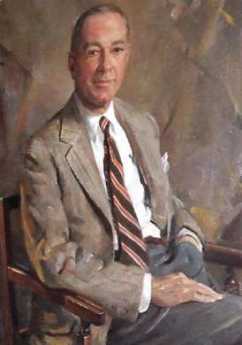
|
| Allan Heely |
The then Head Master of The Lawrenceville School, Allan V. Heely, came around to Yale to visit recent graduates in their college freshman year. For secondary school principals that would, in itself, be quite a novelty today. We certainly considered it a novelty to have him actually buy us a beer, since six months earlier we would have been instantly dismissed from school without hope of appeal, just for one provable beer. The alcohol issue to one side, I can see in retrospect that the Head Master made a serious effort to socialize with his senior students, inviting them to tea every afternoon, and coffee after Sunday chapel. What might sound like quaint Victorian ceremonies to an outsider were in fact conscious efforts to create a role model of the mythical Renaissance Man. He and the school chaplain played piano duets and sang witty songs of their own composition. He brought in famous guests from New York and Philadelphia and made them perform as conversationalists. Jacques Barzun and John Erskine were memorable examples. I can even see in retrospect he was displaying his elegant talented wife as an example of the sort of woman we were urged to marry. To visit his graduates in their early formative years in college was entirely in keeping with his concept of education as the basis for character development. There was even a quote from J. P. Morgan: "Brains don't make success, character does."
Well, for all his effort to be friendly, when the Head Master visits you at college it's a little hard to know what to talk about. So, to be helpful, I pointed out that the science courses were not smoothly integrated between secondary school and college. An example was the contrast between my roommate (Peter Max Schultheiss, now Professor Emeritus of Electrical Engineering at Yale) and me. Pete had scored 100 -- no mistakes on any quiz, all year -- in both Chemistry and Physics, whereas I had not taken either course at Lawrenceville at all. Yet, here were both of us in the same Freshman introductory courses at Yale, required before more advanced courses could be taken. Naturally, Pete had an easier time of it, but at the end of the year we were at the same point, and we both felt he had wasted his time taking the same courses twice. Why couldn't Lawrenceville make an arrangement with Yale to waive the requirement for some introductory courses, saving educational time for something else?
Mr. Heely did a lot better than that. At that time, ninety seniors from Lawrenceville went to Princeton every year, a hundred seniors from Andover went to Yale, and about the same number went from Exeter to Harvard. A pleasant dinner was arranged for the three headmasters and the three University presidents, at the conclusion of which the deal was done. Advanced placement was put into effect. As I understand it, the AP system gradually spread, and last year 14,900 secondary schools offered Advanced Placement courses. You could play around with those numbers and conjecture several million college person-years of education were put to better purposes over the last 62 years. It's a really nice feeling to believe that one twenty minute conversation by two eighteen-year-old boys could have such a useful effect.
So, now what's the problem with these elite high schools, that want to drop AP courses? It's hard to speak on their behalf, but I'm in a unique position to know the original idea has twisted out of shape a little. The original purpose was to eliminate mandatory repetition of introductory college courses, but nowadays competition for admission is so ferocious that repetition is considered a very smart thing, to beat the system. It works up and down the educational system, awarding a high score for coasting through a course the second time. Advance placement thus becomes a bribe not to do that, and the power of the bribe is prestige for admission to some higher level. With 15,000 high schools (like Garrison Keillor's Lake Wobegon) claiming to provide superiority, there has to be accreditation, and for that, there has to be a standardized test. Before long, the curriculum is dominated, not by what the teacher thinks is superior, but by what is likely to be on the accreditation test. In effect, we get a French-like system in which the bureaucracy dictates what is best for the Leaders of Tomorrow. That's quite different from the time when outstanding secondary schools produced an unusually good product, and colleges were asked to recognize it. It's hard to say who's been corrupted here; probably everybody, because it's mass-produced accreditation. If you want to evaluate whether to permit more or fewer waivers for a certain school, you need to evaluate earlier waivees when they reach Junior or Senior level in whatever college had previously done some waiving. Only at that longitudinal point in the process is it possible to conclude whether the waiving of repetitious introductory courses had been useful or harmful.
Underneath all of this is the self-fulfilling prophesy that graduation from a handful of elite colleges will assuredly lead to success in life. If what we need are leaders who are vicious competitors, practiced in circumventing hurdles on the way to getting to the top, credentialism is perhaps a regrettable necessity. But if, as Mr. Morgan said, it's character that matters, gaming the system is not a completely ideal way to promote it.
Advanced Placement Gains Attackers and Defenders
An abridged extract of what

|
| Naomi Riley |
Naomi Schaefer Riley writes in the October 6, 2006 Wall Street Journal, follows:
"... The rat race complaint is that AP courses put a strain on students-too many facts to memorize, too much reading. And teachers complain, too. They say that AP courses force them to teach to test.. .
"Conceived in the early 1950's by educators from three prep schools (Andover, Exeter, Lawrenceville) and three universities (Harvard, Princeton, Yale),
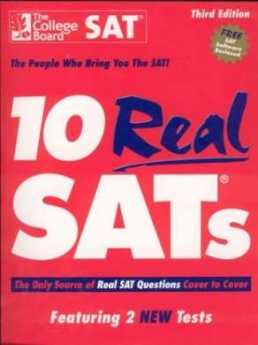
|
| SAT's |
the AP curricula demand that students acquire real knowledge. Unlike the SAT's which measure mental aptitude, the AP tests ask students hard questions on the history exam require students to place quotations and documents in their correct context and to identify events, dates, historical figures, and ideas....
"Why? Because college increasingly offers a crazed social experience at the expense of rigorous study. But high school does better: It is often the last time that students are forced to learn something...."
Ms. Riley goes on to imply that colleges have deteriorated into little more than binge drinking hide-outs. Since I am 62 years away from personal observation of the college scene, I can't comment or even know for certain whether things have changed much in this respect.
But on the topic of resistance to Advanced Placement, Ms. Riley explains enough to justify comment. The SAT revolution, which took place at the same time and much the same place, effectively converts the old college entrance based on genetic probabilities into the new college entrance based on mental aptitude. Since raw mental aptitude seems to be in oversupply, the final decisions are winnowed by extra-curricular success. It would appear to me that the extra-curricular success industry is threatened by proofs of academic achievement. And more importantly, since grade inflation has destroyed the value of high school transcripts, the AP courses serve as a surrogate for effective nerdiness and bookishness. In other words, the AP tests are a threat to the entitlements created by the SAT, one of which is grade inflation.
If grade inflation is under attack, that puts more pressure on high school teachers to teach, school districts to raise their salaries, and taxpayers to pay. Before that happens, there will be pressure to cut the cost of sports and other extracurricular expenses.

|
| Bill Gates |
And, come to think of it, if more nerds are admitted to prestige colleges, perhaps their social inadequacies will reduce college socializing that now appears to alarm, Ms. Riley. For proof of that trade-off, I enclose a photograph of some overachievers of 1978, two of whom dropped out of Harvard because it was unchallenging. Mr. Gates is lower left, Mr. Allen lower right.
Settlement Music School
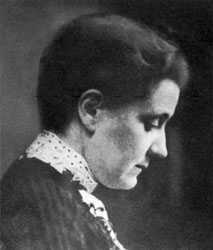
|
| Jane Adams |
The Settlement Music School has six branches, fifteen thousand current students, an $8 million budget, and three hundred thousand alumni. It tells you something about Philadelphia that an organization this large can exist for 98 years, and yet remain almost invisible. So let's tell a few things about it.
The settlement movement began in England around 1880, and was brought to America by a Quaker lady named Jane Addams. Her most famous settlement was called Hull House, in Chicago. Jane Addams seconded the nomination of Theodore Roosevelt at the Progressive Party convention, and was active in the formation of National Association for the Advancement of Colored People, as well as the American Civil Liberties Union. She was a prominent suffragette, and as a Quaker, it might be expected that she was an outspoken pacifist. Remember, what we are talking about here is music.

|
| tenement districts |
Settlements were what nice upper-class ladies called the tenement districts, and a settlement House was a center for activist women to go help the immigrant groups typically found there. Since there is obviously a lot of difference in what needs to be done to help recent ex-slaves, Italian and Jewish immigrants, and all the different ethnic clusters, the Settlement movement is an archipelago of very different forms of social work. One of the ways to appeal to different groups is through the teaching of music, and the teaching on expensive bulky instruments like pianos is quite naturally shared in a school building. While it is true that a couple of Settlement students are admitted to the musical big time at Curtis Institute every year, only a small proportion of Settlement students go on to musical careers. The three most famous musical alumni of the Philadelphia Settlement Music School were Chubby Checker, who invented a dance called the Twist, Albert Einstein. who played the violin in various chamber groups, and former Mayor Frank Rizzo, who learned to play the clarinet.
The mission of the Settlement School has gradually become the spreading of musical appreciation, especially among "the masses", and it measures its success in the size of its audiences rather than by occupying the center of the stage. This function is readily thrust off on them by the eagerness of public school boards to cut expenses, although the School is scarcely in a financial position to go all the way and assume the role of teaching music classes to 250 public schools. Nevertheless, when financial stringency forces the school board to cut expenses, their choice between a music teacher and a football coach is no choice at all. At that moment, a free-standing music appreciation school ceases to be a competitor and becomes a safety valve. When you hear the Settlement School is in need of money, you are likely being told about stringency in the public school budget.
Although the tuition is quite inexpensive for a music school, the students collectively contribute about half of the annual budget. The rest comes mostly from private charity. You really can't expect cutting edge innovation from school children or endowed charities. But somehow this school leaves you with an impression of big missed opportunity in the truly American forms of music like jazz and folk singing. Symphony orchestra was invented in Vienna and flourishes there, so it has a faintly foreign air to it. It's not completely surprising that both the sponsors and the subjects of Americanization for the Slums are hesitant to promote symphonic role models, while the sponsors at least are a little lost in the world of Rock. Not surprising, but something of a pity.
School Tax Seldom Equates to School Spending
 |
| Little Red Schoolhouse |
As this blog went to press, voters throughout South Jersey had just gone to the polls to vote for school boards and school budgets. Or, at least they had the opportunity to do so, but mostly 15% of eligible voters actually troubled to vote. Meanwhile, school officials chewed their nails in apprehension that many budgets would be disapproved by the taxpayers, and then what? As it turned out, Haddonfield and Moorestown approved their budgets, but over half of the 700 school districts of the state did not. The voters wanted to send a message they were angry about property taxes, and the seemingly related fact that over half of school employees are not teachers. Some of them mistakenly believe county taxes have something to do with schools. If they had really understood the situation, they would have been angry that the size of their local school budget has comparatively little to do with the level of their total tax burden.
Meanwhile, voters with children had been agitating to support the budget or even raise it, even if it raised their taxes; but empty nesters were urging each other to go vote down this budget because their taxes were already excessive. The parents of schoolchildren urged the empty nesters to move somewhere else where they couldn't vote down school budgets. Actually, however, if more empty nesters moved in, property taxes would go down without affecting the school budget, because empty-nesters pay taxes without using the schools. Both groups are quite misguided, however, because raising or lowering school budgets would probably have very little effect on overall taxes. Even school officials failed to make their best case to the public because they misunderstood the tricky way taxes are arranged. They defend every budget by saying it is already cut to the bone. Since it presently makes relatively little difference to overall taxes whether the budget is cut or increased, that's not useful in persuading empty nesters. Budget cutting does make a lot of difference to the quality of education, however, but that's only half of the facts, not a balanced one. The moral of all this is that the voters better get educated about the Jersey political scene, before their children lose the chance to get educated at all.

Since I'm an empty nester, I am pretty familiar with the empty-nest viewpoint. Three of my friends have told me they moved to neighboring suburbs in order to lower their tax burden; they undoubtedly know what they are talking about. But no one I know is able to reconcile that fact with the equally certain fact that Haddonfield has the lowest spending on education, per pupil, in the southern half of the state. In fact, they don't care, because they know that local school taxes are significantly lower almost everywhere else, and they don't have to explain why. School officials should be more concerned with explaining their rank in per-pupil spending compared with other districts, but they are driven to make cuts in service where ever they can in order to produce a leaner budget for the voters. They too, seem oblivious to the fact that voter anger won't be soothed for long by their budget cutting because it won't affect overall taxes. Taxes are what people are mad about, but they must consider all of them, and understand that as one goes down, the other will probably go up. In another article, we discuss how they mysteriously go up even more. A more sophisticated view would be that in addition to concern about eradicating poverty in the long run, residents of New Jersey are increasingly driven by the need to get their children into better quality colleges. They would like to improve secondary education to do so but are hampered by the relative unavailability of high-quality colleges in the state. Some of this has to do with the recent tendency of Princeton and Rutgers to seek a geographical diversity of students. But to be cynical about it, the development officers of those colleges know that major donors are to be found in Texas and California. In New Jersey, the majority of income taxes are paid by 1% of the population, and that !% are fleeing the state to avoid its heavy income and estate taxes, just as fast as they can. This is the group that tends to donate most heavily to college improvements, and New Jersey colleges are suffering from their flight. That argument may well be hard to sell in Newark and Camden, but it has a major indirect effect on business creation and employment in the state as a whole.
To return to basics, New Jersey school spending is governed by the Abbott decision, which happens to have been written by a friend of mine, who is a fine, smart, well-intentioned jurist. So-called Abbott districts were found by the courts to have significantly underfunded schools, to the point where it seemed an important public issue that the wealthier parts of the state must help these underprivileged kids get an adequate education. Whether improving the school system in their districts would reduce the crime rate, or welfare rate, among these children in later life, was not then known, but subsequent experience does not give it much support. Mainly, it wasn't so much trying to reduce public expenditures in the long run that was behind the Abbott decision, as the feeling it was the duty of a prosperous society to give deprived kids an even break, a sort of penance for success. Accordingly, state school tax revenues were rearranged in an effort to make the per-pupil spending for education approximately equal in all districts, and particularly in the most deprived areas, the Abbott Districts. The first clear sign that something unintended was happening is shown in the accompanying table, indicating that spending in the Abbott districts was in fact now about fifty percent greater than in prosperous nearby suburbs. Equality might be all right, but fifty percent greater was probably not acceptable to the taxpaying public. Just how that paradox gets accomplished in Trenton is not yet clear, but the discomfort level about it is heightened by noticing there is generally an inverse relationship between the spending per-pupil and the perceived quality of the educational product. You might compare drop-out rates, crime rates, SAT scores or whatever, but public perception is not likely to overcome data seeming to show that the more you spend, the worse the education. One wag commented that the data also seems to show that the further you get from the Delaware River, the lower the educational spending gets; that relationship is also more or less linear. So, what matters here is opinion, and the prevailing opinion is emphatic that this data is upside down. The Abbott decision that school spending must be equalized but is actually greater accounts for much of this funny data, but in addition there almost has to be some overlooked secondary factor which exaggerates the Abbott effect by as much as 50% beyond equality.
Even the education industry has an incentive to explain at least and possibly to correct, this disparity. Because in politics while you can prove almost anything with statistics, it is quite seductive to imply that this data proves that extra educational spending hurts the quality of education, at least above a certain level. The education industry wouldn't be wise to let that sort of accusation go unanswered, even if it comes as a wisecrack. The real empty-nester accusation, sorry to say, is that "My school taxes are way too high. They not only do me no personal good but are not helping underprivileged children, either." The consequence is empty-nesters are driven out of town and out of state, making taxes higher for everyone else. It could take decades to undo this damage with an angered public, so everybody better get to work explaining and correcting the problem.
How Does New Jersey State Aid Affect School Districts?
The Sunday, April 11, 2010 Philadelphia Inquirer contained an eighteen-page statistical summary of the schools within the eight-county area around Philadelphia. The New Jersey school districts, but not the Pennsylvania ones, report per-pupil spending right next to the proportion contributed by a state government. If you know something about the sociology of New Jersey, you form some conclusions about state school aid which probably apply to all states, while confessing they only provably apply to New Jersey. Let's therefore say, it only provably applies to New Jersey that you spend more on schools if you are spending someone else's money.
In the welter of numbers supplied by this statistical report, it seems useful to focus on the strip of school districts along Haddon Avenue, starting from the place where the retreating British soldiers once ferried from Philadelphia to Camden (in 1778, of course.) Haddon Avenue extends directly East until it strikes King's Highway, where the British then turned North to scuttle toward the safety of their navy at New Brunswick. We are thus talking about the school districts of Camden, Collingswood, Haddon Township, Haddonfield and Cherry Hill, with Haddon Heights and Pemberton thrown in because of special features they illustrate.

|
Pemberton Township in Burlington County spends the largest amount of per-pupil school money in South Jersey, $18,970. It jumps right out at you that 82% of that money is contributed to the school district by the state government. Starting back at the Delaware River, 99% nonwhite Camden gets 88% of its school money from the state and has the second-highest spending of $16,131 per pupil. Moving along the path of the British soldiers, the next town after Camden on Haddon Avenue in Collingswood, spending $14,262. Next comes Haddon Township, spending $13,243. It thus seems to prove that the further you get from the Delaware River, the less you spend on education, because next in order comes Haddonfield, with spending of $12,273. But not quite, because Cherry Hill increases a little to $12, 914. The percentage of state funds follows a parallel sequence from Collingswood to Haddonfield (36%, 31%, 6%) and then rises slightly to 11% in Cherry Hill. For comparison, nearby Haddon Heights spends $13,449, of which 10% derives from a state government. And just in case you think there is a racial implication, nearby Gloucester City is 84% white, and gets 82% of the $16,046 it spends on schools, from the rest of the state by way of state contributions. However, these numbers also allow you to calculate how much the local districts spent of their own money. It turns out it is just the reverse. The more state aid a district gets, the less it spends, itself. The more state aid it gets, the more it spends, period.
The conclusion seems to emerge that an education assistance program designed to achieve equality, actually stimulates appreciably more spending in poor districts than in prosperous ones; at least so far, poor educational quality in poor districts is acknowledged to remain poor. There are some people who might say these statistics suggest a racial correlation, but some others could say the correlation is with distance from Philadelphia, while others would associate factors undisplayed in the statistics. Because there are more non-teachers than teachers employed by the schools, it is not certain that extra money going to schools will improve the teaching. Nevertheless, what is not demonstrated at all is a tendency for better education to be found where school money is most liberally applied. At least, it is safe to say that anyone who claims the quality of education parallels these spending patterns in New Jersey, would be laughed at.

|
| Robin Hood |
Of course, it is true that prevailing opinions about the local quality of education are as biased as the opinions about the local football teams, or the differing quality of tomato pies. That's partly because the prevailing opinion of the school system has a strong effect on local real estate values, one of the main concerns of real estate agents. My neighborhood in Haddonfield is very close and sociable, so it's been confided that three empty-nest neighbors have sold their Haddonfield houses and moved to Haddon Heights to save money on taxes. When people make decisions like that, they generally know what they are doing. Available data, however, can be misleading to others because total school spending including subsidies does not reflect local property taxes, while local spending does. Empty-nesters are also very likely downsizing to less expensive homes, where of course the taxes seem lower and are also moving to districts which have fewer children per house. Where that isn't the case in the school districts from which they flee, subsidies are extracted from state income and sales taxes, which move from district to district, right along with empty-nesters who move. For those with children attending public schools, emphasis in these considerations is somewhat different.
The voters have no idea how "equal" became "more" money for education. A fair conjecture would be that the poorer districts kept pressing the legislature for more as a matter of "fairness", leaving the more prosperous districts to shout "outrage", but less effectively. By voting down a majority of local school budgets both groups are shouting, all right, although it would be more effective to shout at their representatives in Trenton. Especially in a census year, when gerrymandering is on every agenda.
Special Education, Special Problems
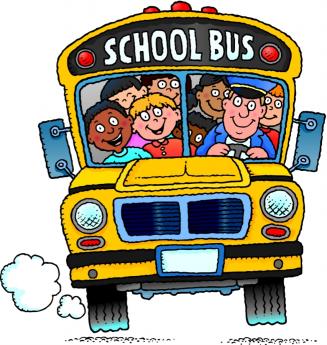
|
| School Bus |
President John Kennedy's sister was mentally retarded; he is given credit for immense transformation of American attitudes about the topic. Until his presidency, mental retardation was viewed as a shame to be hidden, kept in the closet. Institutions to house them were underfunded and located in far remote corners of a state. Out of mind. And while it goes too far to say there is no shame and no underfunding today, we have gone a long way, with new laws forcing states to treat these citizens with more official respect, and new social attitudes to treat them with more actual respect. We may not have reached perfection, but we have gone as fast as any nation could be reasonably expected to go.
However, any social revolution has unintended consequences; this one has big ones, surfacing unexpectedly in the public school system. For example, the king-hating founding fathers were very resistant to top-down government, so federal powers were strongly limited. So, although John Kennedy can be admired for leadership, the federal government which he controlled only contributes about 6% of the cost of what it has ordered the schools to do, and the rest of the cost is divided roughly equally between state and municipal governments. As the cost steadily grows, special education has become a poster child for "unfunded mandates", increasingly annoying to the governments who did not participate in the original decision. We seem to be waking up to this dilemma just at a time when the federal government is encountering strong resistance to further spending of any sort. The states and municipal governments have always been forced to live within their annual budgets, unable to print money, hence unable to borrow without limit. As Robert Rubin said to Bill Clinton when he proposed some massive spending, "The bond market won't let you."
The cost of bringing mentally handicapped individuals back into the community is steadily growing, in the face of a dawning recognition that we are talking about 8% of the population. Take a random twelve school children, and one of them will be mentally handicapped to the point where future employability is in question; that's what 8% means. Since they are handicapped, they consume 13% of the average school budget and growing. The degree of impairment varies, with the worst cases really representing medical problems rather than educational ones. Small wonder there is friction between the Departments of Education and the Medicaid Programs, multiplying by two the frictions between federal, state and municipal governments into six little civil wars, times fifty. An occasional case is so severe that its extreme costs are able to upset a small school budget entirely by itself, tending to convert the poor subject into a political hot potato, regularly described by everybody as someone else's responsibility. There are 9 million of these individuals in public schools, 90,000 in private schools. They consume as much as 20% of some public school district budgets.
All taxes, especially new ones, are bitterly resisted in a recession. Unfortunately, the school budgets are put under pressure everywhere by a growing recognition that our economic survival in a globalized economy depends on getting nearly everybody into college. Nearly everybody wants more education money to be devoted to the college-bound children at a time when there is less of it; devoting 13% of that strained budget to children with limited prospects of even supporting themselves, comes as a shock. Recognizing these facts, the parents of such handicapped children redouble their frenzy to do for them what they can, while the parents are still alive to do it. It's a tough situation because a simultaneous focus on specialized treatment for both the gifted and the handicapped is irreconcilably in conflict with the goal of integrating the two into a diverse and harmonious school community, with equal justice to all.
As school budgets thus get increasingly close scrutiny by anxious taxpayers, handicapped children come under pressure from a different direction. It seems to be a national fact that slightly more than half of the employees of almost any school system are non-teaching staff. Without any further detail, most parents anxious about college preparation are tempted to conclude that teaching is the only thing schools are meant to do. And a few parents who are trained in management will voice the adage that "when you cut, the first place to cut is ADMIN." Since educating mentally handicapped children requires more staff who are not exactly academic teachers, this is one place the two competing parent aspirations come to the surface.
Unfortunately, the larger problem is worse than that. When the valedictorian graduates, the hometown municipal government is rid of his costs. But when a handicapped person gets as far in the school system as abilities will permit, there is still a potential of state dependence for the rest of a very long life. The child inevitably outlives the parents, the full costs finally emerge. We have dismantled the state homes for the handicapped, integrating the handicapped into the community. But when the parents are gone, we see how little help the community is really prepared or able, to give.
Lumpers In Constant Combat With Splitters
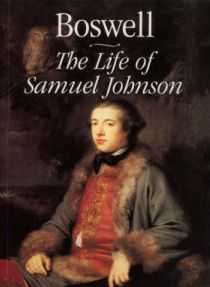
|
| James Boswell's Book |
Some colleges produce managers by teaching management theory, but in certain Ivy League colleges it is thought to be more useful to teach how to dominate a committee, eventually perhaps a board of directors, or a board of trustees. The handbook of instruction is James Boswell's Life of Johnson which is a rather large book of verbatim notes that Boswell took of his many lunches at a London club in the 18th Century. Boswell was a quiet mouse privileged to sit in the company of the great Dr. Samuel Johnson, surrounded by the most eminent intellects of the Enlightenment. Boswell carefully manages the background of each episode, describing the issue and the various arguments, and then -- Sam Johnson's booming voice settles the matter. After he speaks, the meeting is over.
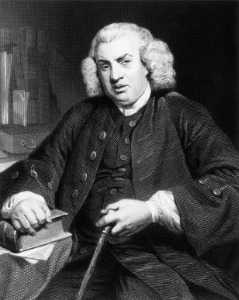
|
| Dr. Samuel Johnson |
"Why, sir", says Johnson, and then look out for the one-liner to follow. We get the impression that Dr. Johnson used that "Sir" signal to indicate he had enough of these dumb arguments, and soon would come the growled epigram that scatters any token resistance. Boswell may have neglected to record instances where the great Johnson was defeated in debate, who knows. We are left with the distinct impression that if you engaged in lunch table conversation with Sam, you were almost certain to lose. So that's what Ivy League students are being taught: how to win a debate at a committee meeting, in the expectation they would spend much of their lives in committees, boards, and even cabinets. That's how the English-speaking world gets its work done and its decisions made. That's what lunches at the Franklin Inn Club, or the club tables of the Union League, are trying to do for the education of neophytes.
As the goggle-eyed student of the great Chauncey Tinker, who gave young Pottle his start in life, it was an awesome performance for me to watch. But the rules of this game never became entirely clear to me, I'm afraid, until the other evening when I listened to Peter Nowell describe in a half-dozen brief paragraphs how he had revolutionized prevailing theories of the cause of cancer. The Franklin Institute then followed the award ceremony by putting on an all-day symposium of notables who run elaborate enterprises in cancer research, essentially funded by the National Institutes of Health, your tax dollars at work again. Last year, the NIH dispensed thirty billion -- you heard me -- dollars in research grants to internationally known research entrepreneurs, and if you can stay awake during their talks, there must be something the matter with you. So far as I could see, they were painstakingly describing every grain of sand on the beach, whereas Peter Nowell made the whole beach electric and clear in ten minutes. Essentially, he was saying that each patient's cancer is caused by a long chain of events, starting with a single mutation within a single cell. All the other cancer cells of a patient are descendants of that first one, which triggered the cascade of chemical events now repeated by the descendants. To stop the process, you probably only have to find a way to break the chain at one vulnerable point. Then you have a cure, without necessarily understanding every other link in the chain.
Peter Nowell described himself as a "lumper", admitting that most scientists are "splitters". A splitter quite reasonably attacks a complex problem by isolating one small piece of it at a time; that's really a pretty good way to address overwhelming complexity when you encounter it. But you can be sure that people of that mindset should not be found in a President's cabinet, deciding how to save the world from impending disaster. Whether by their own genetic predisposition or as a result of peer pressure in their profession, they are habitual splitters. And it suddenly occurred to me why Sam Johnson's one-liners always won the argument; he was a lumper. Usually right, sometimes wrong, never in doubt. Witty as a Frenchman, but as quick as a rattlesnake. Cordial, perhaps, unless you disagreed with him.
We need more lumpers. If they get that way from the likes of Chauncey Tinker, we need to print more copies of The Life of Johnson. If they are born that way, maybe we need a breeding farm for lumpers, which is what the Assembly Ball amounts to. But don't get me wrong, we need more splitters, too. They just have to learn their place at the table.
Atlantic City, Brigantine and the N.I.H.
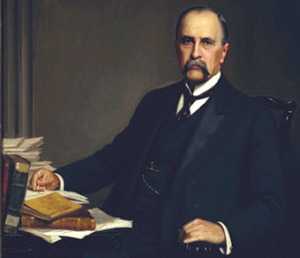
|
| Dr. William Osler |
It would only be honest to say that Atlantic City was a rundown mess after World War II, cheap, sleasey and dispirited. But for academic medicine during a period of thirty or forty years, one small nook of A.C. was the most exciting place in the whole world. Only during several days at the beginning of May, however. The reason it was so attractive to scientists was that beach hotels were cheap and dilapidated; Atlantic City probably contained the worst on the East Coast. The Haddon Hall was an exception, rather elegant and far too expensive for most physicians in training; research is a young doctor's game. The medical profession's annual beauty contest for medical research was headquartered in Haddon Hall next door to the Steel Pier, surrounded by hundreds of cheap lesser hotels. The professors all stayed at Haddon Hall, but few others could afford it. Indeed, resident physicians from Philadelphia mostly found it cheaper to commute from home for ninety minutes than to stay overnight, residents and fellows from more distant cities stayed in the dumpy hotels. Nobody in that age group had much money to spend, so the commuting Philadelphians didn't miss out on much nightlife at the shore by going home every night.

|
| New Atlantic City Skyline |
Before the spring meetings got popular after World War II, a hundred members of the most elite society of academic research professors on the East Coast assembled in Haddon Hall, all of them quite able to afford to stay in the headquarters hotel. This had been going on since William Osler founded it in 1885, at first in Washington, and then migrating to Atlantic City. As medical research began to flourish, the society grew a little, but at a pace too slow to keep up with the growth of medical scientists, so a second group of "Young Turks" formed a competitive society which met the next day, and ultimately a third group, the "Young Squirts", felt excluded by the old has-beens, and met on the third day of what eventually turned into a week-long parade of scientific presentations, each ten or twelve minutes long, starting before normal breakfast time, lasting until 10 PM, with occasional breaks. That is to say, the medical papers that everybody wanted to hear grew from thirty or forty a year to nearly a thousand. If a young fellow did well, the older professors would notice, and he would get employment offers. That kept the eminent older doctors around for the whole session and provided an informal ranking of the worth of the program. Everybody wanted to advance up the ranks of prestige, and this system roughly sorted them out. However, it was an exhausting experience just to sit through all that and listen; the old professors tended to drop out and go home a little early. No matter how many outstanding papers were clamoring to be heard, no one could endure more than a week of straining for attention. It was strictly forbidden to present a paper which had been published or presented anywhere else, so it was usually difficult to guess in advance whether a paper was likely to be exciting. You could go home early if you wanted to, but at the risk of missing the real blockbuster of the year, tucked away on the program with a bewildering scientific title. The younger wise-apples had a formula, that if one paper in three was outstanding, you were having a good meeting; you just had to grit your teeth and try to stay awake during the other two-thirds. Still, that got to mean that the reward for pursuing this grinding ordeal was to go home after learning about three hundred outstanding scientific advances that no one else knew about; knowing three hundred cutting-edge things that other doctors didn't know really did put you well ahead of the pack. Keep that up for ten or twenty years, and notable differences among colleagues would relentlessly emerge.
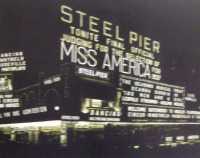
|
| Old Steel Pier |
From the lounge of the Haddon Hall, with non-members forced to stand in the back, the meeting moved to the 2000-seat movie theater in the Steel Pier, at about 1950. Things then came to equilibrium; the movie theater was never completely full. We were told there were seven or eight even larger auditoriums on the Steel Pier, but it was never necessary to move to them. The first four years I attended these sessions I was being paid no salary at all, and most of my contemporaries were only getting token amounts beyond room and board. The eminent professors who were real members of the top society would find their way to front-row seats where they could ask questions, having had a chat with colleagues at breakfast in the Haddon Hall. But they had once been impecunious, too, and wore their brand-new Ivy League plaid jackets rather uncomfortably. Doctors who (gasp) worked for drug companies also gave signs of affluence, but they tended to drift over to the barber shop and have a shoeshine, where they picked up the gossip for their employers. Over a period of fifty years, I can recall first hearing of the wonders of several new antibiotics, a strange chemical called cortisone which seemed to cure rheumatoid arthritis, the introduction of the birth-control pill, the introduction of polio vaccine, the first drugs in the treatment of tuberculosis, and a vast array of novel explanations for disease phenomena that had seemed mysterious for centuries. In those days, a year without a new medical miracle was a very lean year, indeed. During this interval, the basis for curing at least thirty common diseases was first presented at the Spring Meetings in A.C., and since then medical practice looks nothing like it did in 1947.
Gradually the audience changed, too. At first, the people presenting papers came from at most ten medical schools, and mutterings of discrimination could be heard. In fact, it was plainly true, because only about ten schools had any extra money to fund research. When this news reached the U.S. Senators from the Mid and Far West, federal research money started to be spread around more evenly, just like the distribution of Senators. It was the appointment of one of the members of the original small nest of clubs to the Directorship of the N.I.H., the National Institutes of Health in Bethesda, Maryland, which really got the research spigot to flow. The point man was James Shannon, who knew what was what in cutting-edge research, and he sat there in the audience making up his mind who was who. For all the time of his directorship and for long afterward, he enforced, really enforced, the rule of "no political influence in research grants". Lots of congressmen came to the N.I.H. with the news that their relatives had such-and-such a disease, and so they thought more money should be diverted to research in that area. Nothing doing. Shannon held the keys to the kingdom, and he knew it. He had a deft feel for how much money the research industry could usefully absorb, and then he went to Congress and demanded it. The purity of this process has frayed at the edges somewhat as the amounts of money grew to what is now thirty billions of dollars a year. Most experiments, unfortunately, fumble or fail, so a lot of money gets spent on blind alleys before someone gets it right. It takes a tough-as-nails idealist like Jim Shannon to survive the temptations of an N.I.H. Director, and among the temptations is just to give up and give out money indiscriminately to people who want to count all the grains of sand on the beach. If your idea was a good one, you got all the money you could possibly spend; if the idea was mediocre, in those days you got nothing at all. On the other hand, the estimation of overhead costs is something other mortals can quibble about. Shannon demanded and got about a third of the grant money to be given to the medical school administrations. That was barely enough in a research establishment emerging from the Depression of the 30s, and the World War. However, now that the pipeline is filled, it is increasingly doubtful that ten billion a year needs to go to administrators; the bean-counters took over, and the results are more open to criticism. After all, after someone finds a cheap cure for cancer, some disadvantages of perpetuating an aging retiree population start to emerge and may outweigh the arguments for spending quite so much doing it. That may well be what the advisors to President Obama are growling at, but for now, the example of his nose poked into the hornet's nest of favoring research for certain population (voter?) groups will restrain others who were once inclined to agree. After cancer is cured, perhaps then everything will seem different.
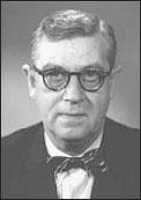
|
| Dr. James Augustine Shannon |
Well, let's tell one story out of many that could be told. Around 1965 there were two competitive polio vaccines rumored to be in the pipeline. Jonas Salk had an injection method, and Albert Sabin had an oral vaccine. Anyone who had watched children run shrieking from a needle knew that Sabin had the preferred method, but Salk got to Atlantic City two years earlier than Sabin. The auditorium was filled with rumors of very dubious precision to the effect that Salk had used unfair methods to get to the stage of public announcement. For example, it was growled he gave the vaccine to the Russians to test, but they were afraid of it and gave it to the Poles. Regardless of such scurrilous gossip, which is here repeated only to show how hysteria can occasionally agitate even scientists when Salk gave his paper at the Steel Pier, the standing ovation was thunderous. And so, as the meeting broke for dinner the crowds migrated over to a huge seafood restaurant named Hackney's and watched the new scientific hero get a little tipsy in public. That seemed to revive the rumors which became even less factual. But there is no doubt that by the time Sabin stood at the same podium and gave his presentation of the oral vaccine, the crowd had switched to his side, the ovations were unlike anything the scientists had ever heard. Anyway, as emotions now settle down in retrospection, we are all pretty happy that polio is nearly eradicated from all but a few corners of the earth, and these two men are both responsible for it. But so is Jim Shannon responsible for it, and he never got the ovations he deserved.

|
| Mr. Peanut |
When the gambling casinos came to A.C. the cheap boarding houses were swept away, doctors in the research were incidentally better paid, and the Spring Meetings migrated back to Washington. The dumps on the beach have been replaced by gleaming multistory hotels, the place looks much more prosperous. Doctors are in a position to know about the drug and alcohol addiction, the venereal disease and crime among the casino employees, and the personal tragedies among the gamblers. But anybody can see the new buildings and clean streets. When a group of eight of us took a nostalgic trip to revisit the place, no doctor even mentioned the idea of going in to drink and gamble -- even the suggestion was preposterous. So we wandered over to Brigantine where there appears to be a large retirement community, where gambling and drinking seem equally unlikely. The elementary school in which we heard a talk about the old days was splendid beyond anything I remember in an elementary school. Among the audience, the questions revealed there were many former employees of the old A.C., people who ran shops to sell salt water taffy, fudge and the like to crowds on the boardwalk. Some of them may have once driven Jitney buses or pushed sightseeing wheelchairs. But not one of them showed the slightest sign of recognizing that on the first weekend in May, every year, a crowd of nerdy-looking serious fellows would move into familiar boarding houses for a few days, remaining mostly invisible during daylight hours. That was the academic doctor crowd if anyone had bothered to ask, pouring into the Steel Pier movie theater, having the time of their lives listening to medical history being made. After a week they all went home, and nobody in A.C., later Brigantine, paid any attention to any of it. After all, A.C. is about salt water taffy, right?
Gum

|
| Gum Bubble |
The ancient Greeks and Romans are said to have enjoyed a sort of chewing gum. The ingredients are uncertain but unlikely to have been chicle, the sap of a variant rubber tree, which was taken up by the Mayans in the First century. The vision thus ensures that Mexican soldiers might well have been chomping when they set out to conquer Texas and devastate the Alamo. Conceivably Santa Ana himself was popping bubbles when Sam Houston found him crawling through the tall grass when he should have been dying like a man.
What is not so fanciful is that Santa Ana did go into exile in the United States, seeking refuge on Staten Island. Taking along a large supply of chicle, he was hoping to find a way to change it into rubber and thus restore his fortunes. His New York landlord, a photographer named Adams, struggled unsuccessfully for months to change the gum into rubber, but eventually switched over to chewing gum of chicle. This Mexican rubber variant is chewy only within a narrow temperature range, getting brittle when cold, and sticky when hot. The outcome of this bizarre episode was the Adams brand of chewing gum, a dominant feature of our culture until 1922 when William Wrigley, Jr. of Chicago added a mint flavor and made a great fortune selling the hope that minty taste would clean your teeth, sweeten your breath, and improve attractiveness to the opposite sex. Wrigley must have been a great businessman, since the Wrigley Building still dominates central Chicago, while everyone knows about Wrigley baseball field, and his descendants even run a private railroad through the Copper Canyon south of Tucson into Mexico. Wrigley's winter mansion sits on top of a small mountain outside of Phoenix, once affording a grand view of the surrounding desert for many miles. But subprime mortgages helped build up the desert, so at night there is now a sparkling view of the lights of Phoenix suburbs, longingly gazing up at Wrigley's mountain fastness filled with pictures of relatives who got themselves great notoriety, mostly related to unfortunate escapades with love.
Well, whatever. By 1960 a cheaper synthetic chemical came to replace chicle in Chiclets without distressing the customers and seemingly making it commercially practical to spread this central feature of American culture to Asia, Europe and beyond, with the notable exception of France which makes their cultural superiority a point of national pride. On further reflection, if they prefer vintage chicle to the present chemically improved synthetic, the French may have an important insight. Just look at our filthy sidewalks.
Other cities may be more diligent in scrubbing their sidewalks, but at least in Philadelphia, the new synthetic chewing gum is leaving its mark. The realization gradually creeps up on you that sidewalks near popular corners of the center city are spotted with round black spots, slightly larger than a silver dollar, but uniformly black. Just what the sidewalks around high schools look like, I tremble to consider. But those city corners where a sidewalk vendor parks his cart are particularly peppered, representing the disgusting habit of spitting the chew-gum on the sidewalk before eating the hot dog. The detritus is flattened out by someone's shoe, and the result is quite distinctive. As I was contemplating a particularly loathsome street corner, a passing Philadelphia Grand Dame shared her insight with me that the gum attracts dirt and gets black. I somehow doubt that because it is such a uniform blackness. It seems more likely that the trade secret chemical deteriorates in the sunlight, and being less sticky than the traditional goo, sticks to the sidewalk instead of the shoe which squashes it.
So think this over. Someone was recently chewing that stuff; would you kiss that person? If it's fresh enough, it might transmit the flu virus to your shoe; ye Gods, maybe the HIV virus, perish the thought. There's a great absence of evidence about the disease transmissibility of this unknown material. Maybe our congressmen should take a recess from blaming Wall Street for the decline of Greece and Portugal. And make chew-gum scoopers just as mandatory as pooper scoopers.
Footnote: A fellow member of the Right Angle Club recently revealed he had once worked for the Philadelphia Chewing Gum Company in Havertown, which was closed by new owners in 2003. While he didn't know anything about the ingredients of gum, he could report that this company used trainloads of old rubber tires for some purpose. On further checking, it is stated in the literature that at the present time, no chewing gum doesn't use rubber, so apparently Santa Ana's dream has finally come true in a round-about way.
Effingham Buckley Morris
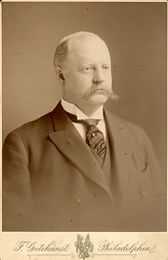
|
| Effingham Buckley Morris |
The vibrant chatter of schoolchildren is familiar at the Academy of Natural Sciences; its museum is a standard stop for local school trips and family outings. Effingham Buckley Morris, the president of the Academy from 1928 until his death in 1937, is largely to thank for the museum's youthful spirit. A giant of the Philadelphia banking community, Morris used his success in business as well as his connections to other local institutions to advance the Academy's outreach. In 1936, after conducting a comprehensive survey of the Academy's work, Morris and his associates announced the Educational Development Program. One goal was to create a specific Education Department, dedicated to educating children from local private and public schools. As Morris put it on the day of the Program's public unveiling, "We want a museum where ideas are on display rather than things." The Academy has certainly succeeded over the years in fulfilling Morris' ambitions.
Morris had quite a knack for inspiring people and institutions to think big and move in new directions. He was often quoted as having a unique ability to "enlist the loyal co-operation of his colleagues," garnering followers and supporters wherever he went.
A member of the well-known Quaker "Morris" family of Philadelphia, Effingham Buckley came from a long tradition of civic engagement. Effingham was born in the old Morris mansion on Eighth Street, the son of Israel Wistar Morris and Annis Morris Buckley. During his boyhood, he attended the Classical Academy of Dr. John W. Faires and then enrolled at the University of Pennsylvania for undergrad. It was at Penn that he began his long and illustrious career as a "leader," founding the College Boat Club and becoming one of the first presidents of the University Athletic Association. His popularity and vibrant spirit only grew as he established himself as an adult in the Philadelphia community. Although Digby Baltzell was later to immortalize a tradition of disdain for the diffidence and lack of distinction of Quaker-dominated Philadelphia, he certainly seems to have overlooked Effy Morris.
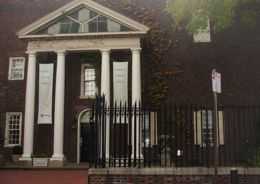
|
| Old Morris Mansion |
After receiving his graduate degree in Law from Penn, Morris worked exclusively in that field for several years. During this period of American expansion and economic growth, Morris was heavily involved in the booming railroad business throughout Pennsylvania, helping to settle deals during its various organizational forms. Because of its many mergers and acquisitions, a successful railroad mainly embodies a successful lawyer. During the long period when railroads were at the heart of the Philadelphia economy, a majority of railroad presidents were lawyers.
Perhaps the crowning achievement of Morris' career, however, was his wildly successful Presidency at the Girard Trust Company. One of his first moves as President was to set the company's important presence in stone through the construction of the Pantheon-esque Girard Trust Company building on Chestnut and Broad streets. Attached to this building, and now home to the Ritz Carlton hotel is a tall, impressive skyscraper that is also part of Morris' legacy. This white skyscraper had many critics during the days of its construction in 1888, but it was to become the first "office" building of its kind. Although the Witherspoon building at 13th and Chestnut makes the same sort of claim, the two Girard structures across the street still dominate the heart of the city today.
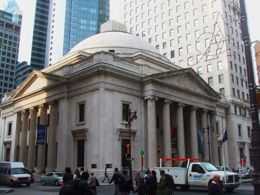
|
| Girard Trust Building |
During his career, Morris managed to become involved with a host of financial institutions in Philadelphia; he was the director of the Philadelphia National Bank, the Fourth Street National Bank, the Commercial Trust Company and a manager of the Philadelphia Saving Fund Society. He also became the trustee of large estates, including those of Anthony J. Drexel, and William Bingham.
Aside from his financial involvement in Philadelphia society, Morris was also an active member in its cultural societies. The Colonial Society of American, the Historical Society, and the Union League are just a few clubs of which Effingham Morris was a member. Morris also became a dedicated patron of the sciences, joining the board of the Wistar Institute of Anatomy and Biology and in 1928, donating to the Institute 150 acres of historic Pennsylvania land in Bucks County for the study of biology.
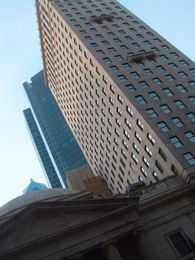
|
| New Ritz Carleton Hotel |
Effingham became a member of the Academy of Natural Sciences in 1896. He was later elected Chairman of the Finance Committee in 1905, then to the Board in 1925 where he was then elected president in 1928. Effingham approached his presidency with caution and modesty, aware of his limited knowledge in the scientific field and often enlisting the advice of his so-called "alter-ego," and the Academy's future president, Charles M. B. Cadwalader. Morris used his unique skills and local connections to help the Academy grow in new directions and expand its educational capacities.
Morris remained active until his death in 1937 and was, in no doubt, a dominant force in the development of Philadelphia and the improvement of its institutions. His portrait in the Academy's Library serves as a reminder of the Institution's deep and historical connections to the Philadelphia non-scientific community.
Children's Scholarship Fund of Philadelphia (2)

Because the Right Angle Club makes donations to the Children's Scholarship Fund, representatives are asked to come discuss it with us from time to time. We recently had such a visit, resulting in a growing understanding of what the fund accomplishes. Briefly stated, their scholarship winners have a 95% record of graduating from high school and a 90% record of going to college. That compares very favorably with the average Philadelphia public school enrollee, who only achieves a 50% record of graduation.
That's got to be a good record, achieved by selecting the scholarship winners by random lottery; obviously, that's better still. It's not quite random, however, because the siblings from a winner's family are also awarded a scholarship. Let's repeat: the winners are not selected because of talent, IQ or achievement test. Nor are they followed, to see if they actually go to school or do their homework. Therefore, these children are definitely not selected because of either merit or diligence. They are just poor kids from Philadelphia, randomly selected by lottery. So what accounts for their markedly superior record of graduation and admission to college? It just about has to be related to either the parents or the school, and mostly it seems to be the quality of the school.
The parents have to be sufficiently motivated to contribute up to $500 yearly co-payment because that accounts for about 20% of the extra cost. A variety of other community sources account for 40%, and 40% is matched by the generous donor and originator of the idea. When the alternative for a poor family is free public school, a $500 cost really is an incentive to get something back for the money.
But most likely the main difference in outcome is due to the excellence and effort of the school. About two hundred private schools in Philadelphia are carefully selected as eligible participants, and of course, there is the invisible threat of withdrawing schools from the list if things don't work out. It's thus pretty hard to escape giving sole credit to the excellence of the teachers and schools when the contribution of the parents is mostly to demand that the students submit to it. So, like it or lump it, this scholarship fund is a social experiment in whether inner-city academic performance will improve if you improve the schools, and essentially do nothing else. And raising the performance from 50% failure to nearly 100% success certainly emerges almost totally as an achievement of a better school system. When the failing public school system compares so poorly while spending more money, the point is proven to most people. Note to politicians: fix the $#@&^# schools, and promptly.
With this point so definitively made, it is indeed possible that some of the ideas of the originator were a little off the mark. It is commonly argued by opponents of school vouchers that merit promotion of the students, or merit-based scholarships, or the creation of centers of excellence all have the potential for siphoning off the best students, thus worsening the remaining academic environment, the incentives for the teachers, and the discipline -- for everybody else. This experimental program dramatically proves that any such effects are overwhelmed by improving the schools in inexpensive ways. Most ambitious parents are already determined to move their children to better schools if they can find them, no matter what is done -- or not done -- to help substandard pupils; the day of bewildered immigrant rural peasants arriving on our shores is over.
Fixing the elementary schools is thus exposed as a purely political problem; kick out the politicians with the unions they are protecting, and the job is nearly done. After all, children below the fourth grade are mostly sweet little confections, ready to flower if you remove impediments. The inner-city schools from fourth to twelfth are a somewhat more difficult issue, mostly because of their hormone content. The home environment is probably more important at that age, and changing whole cultures is very difficult. But the Philadelphia School System was once a source of great pride, and the Philadelphia Catholic School System was once the best in America. Somehow, the suburban secondary school system is falling down on its job as an unchallenged exemplar, coasting on invidious comparisons with the inner city. It's high time the suburban schools stopped preening themselves and stopped coddling the outrageous behavior and low academic standards the situation promotes in both students and teachers. Let each one of these places adopt a sister school in the inner city and help it out. The college admissions committees could help this happen a little by shifting their preferences to suburban private schools, unless or until the suburban high schools pull up their socks.
From time to time, someone angry about education expresses the wish for a deep economic depression or a massive world war or both. Please. What's needed here is competition.
Medical Generation Gap
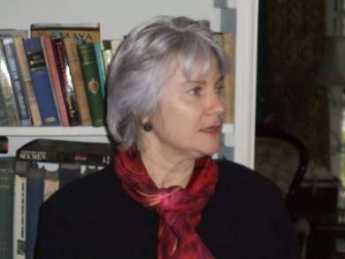
|
| Miriam Schaefer |
To understand the dynamics of the following medical anecdote, the reader should understand the thrust of Miriam's First Rule of Management. Miriam is my oldest daughter, with long experience managing many firms, large and small. Her rule is that when an employee starts misbehaving for no good reason, eliminate the position. Invariably, well almost invariably, an employee who starts acting out doesn't have enough work to do. If you are managing a large organization, you should also consider firing the supervisor of that person, on the grounds the supervisor should have noticed there was not enough work for the employee to do and was probably covering up.
My anecdote concerns a session at the 2006 annual meeting of the American College of Physicians, ostensibly devoted to the conflict between generations of doctors. It didn't take long before the meeting turned into an uproar about the new work rules which prohibit a resident physician from working more than 80 hours a week. That's supposed to protect patients against mistakes of sleepy doctors, although some suspect it is mainly an outgrowth of a gap between what they do and what they expected to do. From the time they entered high school, future doctors have been taught to expect workaholic employment conditions, and while more normal people haven't been taught that message, that's irrelevant. The situation is aggravated by the increased admission of women to the profession, who for their part have been taught to expect a breathless race between finishing their work and getting home to relieve the babysitter. Perhaps in time the newly invented specialty of "hospitalists" will get established and accepted, along with accident room work as another harrowing occupation which abruptly ends its day by the clock rather than the backlogs. At the moment the pioneers must overcome the suspicion, only partly fair, that Miriam's First Rule applies to them.
If not, that Rule clearly does apply to the youngsters who now must go home to spend quality time with their families, because they are not allowed to exceed the new work rules. At the ACP meeting, a dozen of us Civil War veterans were treated to an appalling amount of teenage mumbo jumbo apparently emanating from unsuspected warfare between Generation X and the Baby Boomers, their supervisors, mentors, and colleagues. All of us Civil War veterans held the private opinion that Baby Boomers were a little self-indulgent, but in the eyes of Gen Xers the boomers are workaholic fanatics, incapable of relaxing even for a moment in order to enjoy the life of the good, the true and the beautiful.
As we passed out of the room at the end of the session, one of the silent gentlemen with white hair came over to me. We didn't know each other, but we recognized the signs of a silently shared opinion. The old doctor leaned over to me and muttered, "They offer nothing, but they want everything." I smiled, and we parted. I guess I might have told him about Miriam's First Rule, but it would have taken too much explaining.
Ruminations About the Children's Education Fund (3)
The Right Angle Club runs a weekly lottery, giving the profits to the Children's Educational Fund. The CEF awards scholarships by lottery to poor kids in the City schools. That's quite counter-intuitive because ordinarily most scholarships are given to the best students among the financially needy. Or to the neediest among the top applicants. Either way, the best students are selected; this one does it by lottery among poor kids. The director of the project visits the Right Angle Club every year or so, to tell us how things are working out. This is what we learned, this year.
The usual system of giving scholarships to the best students has been criticized as social Darwinism, skimming off the cream of the crop and forcing the teachers of the rest to confront a selected group of problem children. According to this theory, good schools get better results because they start with brighter kids. Carried to the extreme, this view of things leads to maintaining that the kids who can get into Harvard, are exactly the ones who don't need Harvard in the first place. Indeed, several recent teen-age billionaires in the computer software industry, who voluntarily dropped out of Harvard seem to illustrate this contention. Since Benjamin Franklin never went past the second grade in school perhaps he, too, somehow illustrates the uselessness of education for gifted children. Bright kids don't need good schools or some such conclusion. Since dumb ones can't make any use of good schools, perhaps we just need cheaper ones. Or some such convoluted reasoning, leading to preposterous conclusions. Giving scholarships by lottery, therefore, ought to contribute something to educational discussions and this, our favorite lottery, has been around long enough for tentative conclusions.

|
Just what improving schools means in practical terms, does not yet emerge from the experience. Some could say we ought to fire the worst teachers, others could say we ought to raise salary levels to attract better ones. Most people would agree there is some level of mixture between good students and bad ones. At that point, the culture mix becomes harmful rather than overall helpful; whether just one obstreperous bully is enough to disrupt a whole class or something like 25% of well-disciplined ones would be enough to restore order in the classroom, has not been quantitatively tested. What seems indisputable is that the kids and their parents do accurately recognize something desirable to be present in certain schools but not others; their choice is wiser than the non-choice imposed by assigning students to neighborhood schools. Maybe it's better teachers, but that has not been proved.

|
It seems a pity not to learn everything we can from a large, random experiment such as this. No doubt every charity has a struggle just with its main mission, without adding new tasks not originally contemplated. However, it would seem inevitable for the data to show differences in success among types of schools, and among types of students. Combining these two varieties in large enough quantity, ought to show that certain types of schools bring out superior results in certain types of students. Providing the families of students with specific information then ought to result in still greater improvement in the selection of schools by the students. No doubt the student gossip channels already take some informal advantage of such observations. Providing school administrations with such information also ought to provoke conscious improvements in the schools, leading to a virtuous circle. Done clumsily, revised standards for teachers could lead to strikes by the teacher unions. Significant progress cannot be made without the cooperation of the schools, and encouragement of public opinion. After all, one thing we really learned is that offering a wider choice of schools to student applicants leads to better outcomes. What we have yet to learn, is how far you can go with this idea. But for heaven's sake, let's hurry and find out.
Barnes Arboretum
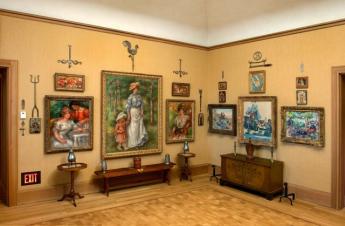
|
| The Barnes Foundation |
If you want to live on City Line Avenue, safely in Montgomery County, you put your entrance on Latches Lane, which is parallel to City Line. It used to be said that the Barnes Foundation was next to Episcopal Academy, but that has moved further West, and St. Joseph's University now owns the property. When St. Joseph's decides what to do with the land, we can possibly describe a better landmark. The Barnes Foundation has always faced away from Philadelphia and is a little hard to find, all of which may have something to do with Dr. Barnes' strong dislike of the City.
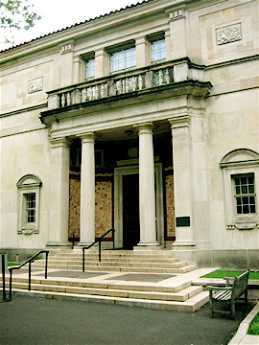
|
| The Barnes Museum |
When you go there now, the old Museum is still there, but already showing signs of neglect. The house the Barnes family lived in is still, right next door. But it's harder to move an Arboretum than a group of paintings, so the Arboretum School, which was Mrs. Barnes' hobby, is still at the same place, likely to stay awhile. It's still a very nice place to visit, especially right at Labor Day when the very large Franklinia Trees are in full bloom. Like all Franklinia trees, these are direct descendants of the only example John Bartram was able to find, in Georgia or anywhere else.

|
| Medicinal Garden |
We're going to have to leave the decision to former Governor Rendell, about what you do with an empty museum since he is said to have had a lot to do with making it that way. We came to see the Arboretum.
The first thing which strikes you is that many of the big old trees are much older than the Barnes Foundation would have been. The brochure helpfully explains that a 19th Century tree fancier started it in 1880, and the Barnes acquired it in 1922. That still wouldn't account for a massive tree which is lying on the ground all cut up, opposite the Medicinal Garden. The base of the tree must be three or more hundred years old, so perhaps there was a grove of old oaks, just over the line of William Penn's city, which every owner tended carefully until the bugs got it. There are a considerable number of Chinese trees that look about right for 1880, but without a guide, it's pretty conjectural.

|
| Japanese Beetle |
Ever since someone imported the Japanese beetle along with some plants, to Moorestown, New Jersey, there have been laws prohibiting the importation of plants from abroad, but there must be some regulatory rigamarole which allows museums to do it. Korea and Japan are at the same latitude as Philadelphia, and the glaciers spared some ancient dinosaur food in those regions, so quite a few strange plants have come here from that source. Since the Barnes is a school, and since it only has a few acres, many if not most of the specimens in the gardens are one or two of a kind. That either means they have a feeder garden somewhere to store backups or a good relationship with government officials. Like all Arboretums, it attracts insects, so be prepared to do some swatting if you go. The school is said to be outstanding and quite conveniently located, but even just a stroll around is quite a nice way to spend a Sunday afternoon.
22 Blogs
Cost of K-12 Education
 The Philadelphia Inquirer just published the average school expenditures, per district, in our region of 166 districts within 8 counties. The City of Philadelphia comes in dead last, at $11,460 per pupil.
The Philadelphia Inquirer just published the average school expenditures, per district, in our region of 166 districts within 8 counties. The City of Philadelphia comes in dead last, at $11,460 per pupil.
Children's Scholarship Fund (1)
 The Right Angle Club has decided to make donations to the Children's Scholarship Fund of Philadelphia..
The Right Angle Club has decided to make donations to the Children's Scholarship Fund of Philadelphia..
Religion at Girard College:Spiritual But Irreligious
 In his will, Stephen Girard famously banished all clergymen from the grounds of his school for orphans, even as visitors. Nevertheless, the school's atmosphere is a highly ethical, even religious, one. Many graduates have become ministers.
In his will, Stephen Girard famously banished all clergymen from the grounds of his school for orphans, even as visitors. Nevertheless, the school's atmosphere is a highly ethical, even religious, one. Many graduates have become ministers.
The Supreme Court Revisits Girard's Will
 The tangled history of Stephen Girard's will and its two trips to the US Supreme Court, tells us a lot about what's at stake in the appointment of judges.
The tangled history of Stephen Girard's will and its two trips to the US Supreme Court, tells us a lot about what's at stake in the appointment of judges.
Military School
 Valley Forge Military Academy takes rambunctious boys and makes them into leaders. Even some of the misfits and dropouts seem to benefit from the difficult experience.
Valley Forge Military Academy takes rambunctious boys and makes them into leaders. Even some of the misfits and dropouts seem to benefit from the difficult experience.
The Schools of School House Lane
 Exclusive privates schools and colleges are usually to be found in isolated rural settings. But our oldest, best, and most famous schools are clustered together in a neighborhood that is far from exclusive.
Exclusive privates schools and colleges are usually to be found in isolated rural settings. But our oldest, best, and most famous schools are clustered together in a neighborhood that is far from exclusive.
Germantown Before 1730
 The early German settlers of Germantown were religious intellectuals, with a Swiss background and a history of religious martyrdom.
The early German settlers of Germantown were religious intellectuals, with a Swiss background and a history of religious martyrdom.
Preppies of the Future?
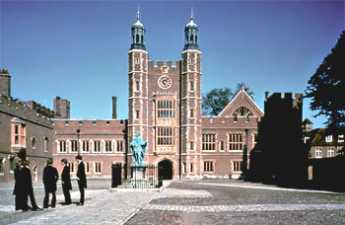 Elite boarding schools may not perceive their proper role, which is a useful one.
Elite boarding schools may not perceive their proper role, which is a useful one.
Unintended Consequences for Advanced Placement
 The story of how the author complained to his head master about preparation for college and how it led to the concept of Advanced Placement courses in high schools.
The story of how the author complained to his head master about preparation for college and how it led to the concept of Advanced Placement courses in high schools.
Advanced Placement Gains Attackers and Defenders
 College admission is so competitive it creates vested interests. Everything is questioned, even the value of college itself.
College admission is so competitive it creates vested interests. Everything is questioned, even the value of college itself.
Settlement Music School
 Without much notice, fifteen thousand music students attend six branches of a school with connections to the NAACP, ACLU, and the Bull Moose Party.
Without much notice, fifteen thousand music students attend six branches of a school with connections to the NAACP, ACLU, and the Bull Moose Party.
School Tax Seldom Equates to School Spending
 Voting today on school budgets, local districts in New Jersey do not seem to realize how poorly school spending correlates with school tax rates.
Voting today on school budgets, local districts in New Jersey do not seem to realize how poorly school spending correlates with school tax rates.
How Does New Jersey State Aid Affect School Districts?
 State aid for schools is like health insurance: costs go up faster when you aren't spending your own money. At least, that's what the New Jersey statistics seem to show.
State aid for schools is like health insurance: costs go up faster when you aren't spending your own money. At least, that's what the New Jersey statistics seem to show.
Special Education, Special Problems
 Until recently, mentally retarded children weren't even considered in school budgets. But in recent decades, they have become one of the biggest challenges.
Until recently, mentally retarded children weren't even considered in school budgets. But in recent decades, they have become one of the biggest challenges.
Lumpers In Constant Combat With Splitters
 The home dinner table is no longer the place most families teach the rules of conduct to each other, probably because of the invasion of homes by television. But there are places where friendly debate is still conducted and social issues are settled. In Philadelphia, newcomers are still taught what's what, in this manner.
The home dinner table is no longer the place most families teach the rules of conduct to each other, probably because of the invasion of homes by television. But there are places where friendly debate is still conducted and social issues are settled. In Philadelphia, newcomers are still taught what's what, in this manner.
Atlantic City, Brigantine and the N.I.H.
 Great scientists in crowds look and act pretty much like everyone else.
Great scientists in crowds look and act pretty much like everyone else.
Gum
 Perhaps we should refer to bubble gum as Santa Ana's revenge.
Perhaps we should refer to bubble gum as Santa Ana's revenge.
Effingham Buckley Morris
 Effingham Buckley Morris may not have thought of himself as a scientist but his love for Natural History brought the Academy of Natural Sciences much closer to the public and established the institution as an important component of Philadelphia. His banking career was a notable one.
Effingham Buckley Morris may not have thought of himself as a scientist but his love for Natural History brought the Academy of Natural Sciences much closer to the public and established the institution as an important component of Philadelphia. His banking career was a notable one.
Children's Scholarship Fund of Philadelphia (2)
 By selecting inner-city children by lottery to win scholarships, but selecting the schools with care, this ingenious charity is really a way to prove if schools make a difference. They really do, and the doubled graduation rates make you ask why anyone claimed to doubt it.
By selecting inner-city children by lottery to win scholarships, but selecting the schools with care, this ingenious charity is really a way to prove if schools make a difference. They really do, and the doubled graduation rates make you ask why anyone claimed to doubt it.
Medical Generation Gap

Ruminations About the Children's Education Fund (3)
 By selecting children for scholarships by lottery, it emerges that different schools make big differences.
By selecting children for scholarships by lottery, it emerges that different schools make big differences.
Barnes Arboretum
 The Barnes impressionistic art has moved to the Parkway in Philadelphia, where Dr. Barnes said he never wanted it to be, But the Arboretum remains on Latches Lane in Merion, just across City Line Avenue, next to where Episcopal Academy used to be, and now is occupied by St. Joseph's.
The Barnes impressionistic art has moved to the Parkway in Philadelphia, where Dr. Barnes said he never wanted it to be, But the Arboretum remains on Latches Lane in Merion, just across City Line Avenue, next to where Episcopal Academy used to be, and now is occupied by St. Joseph's.